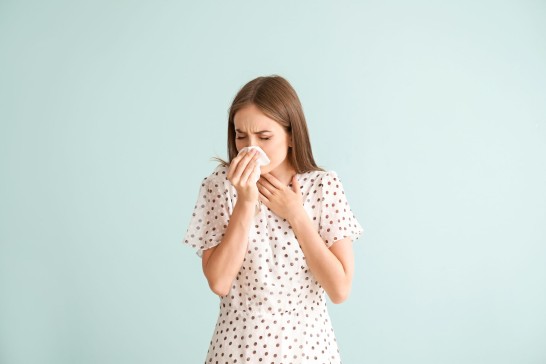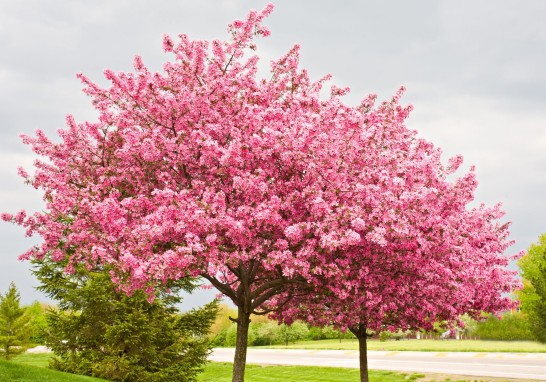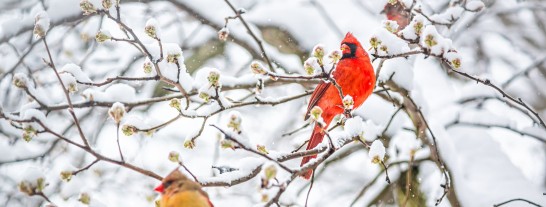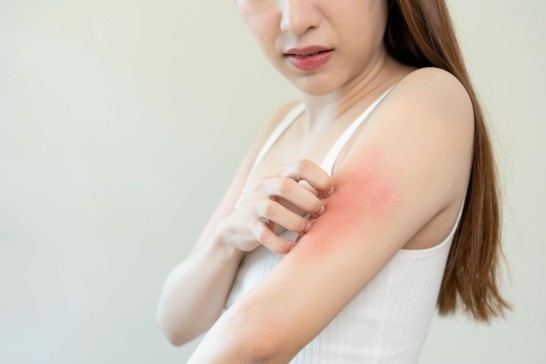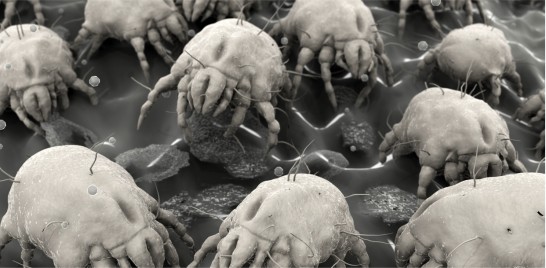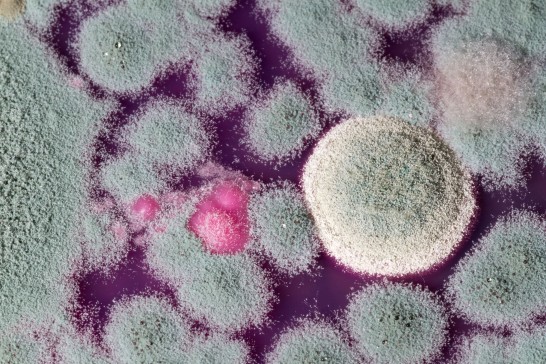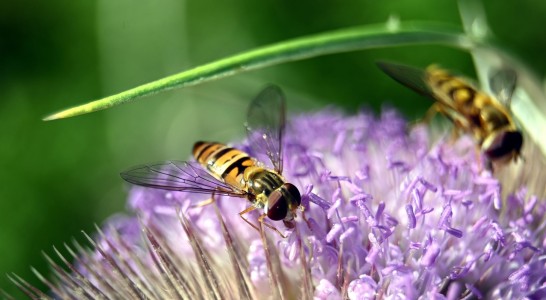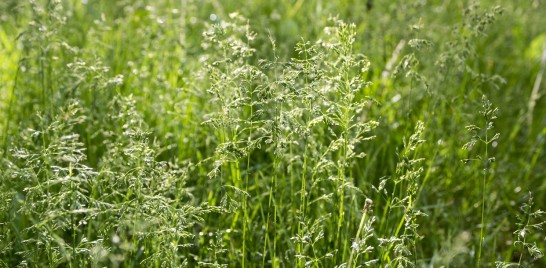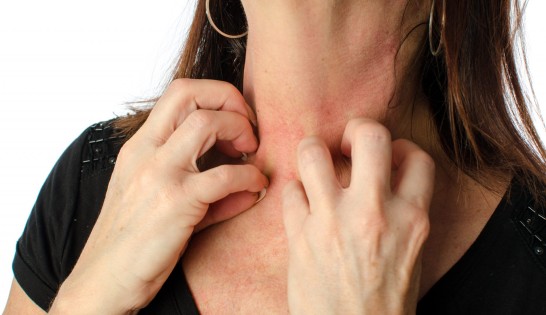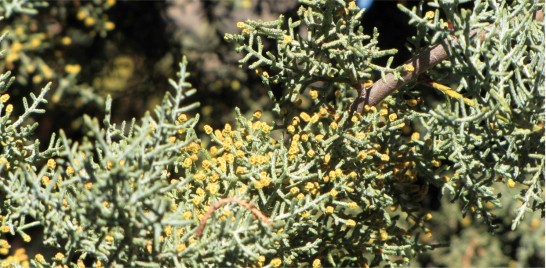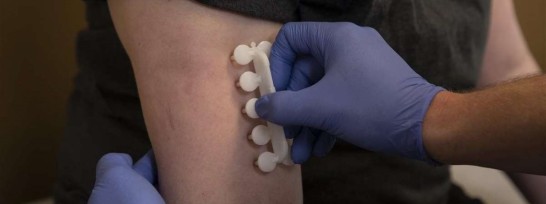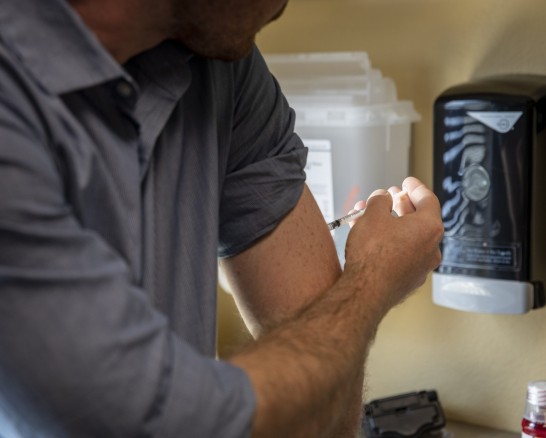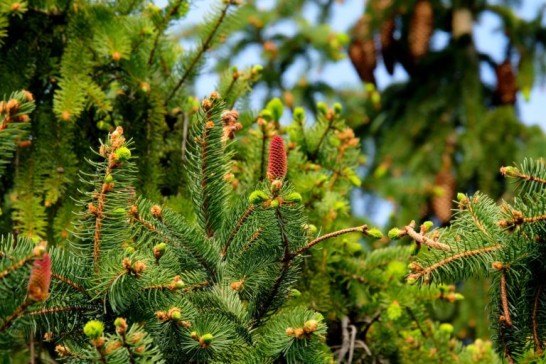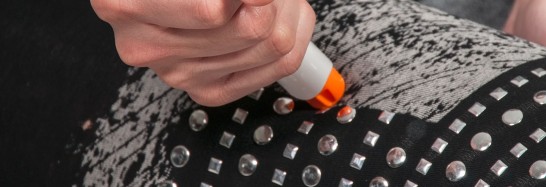Am I Suffering from Allergies? Or Something Else?
There is a wide range of variability from person to person when it comes to allergies. The unique circumstances of each person and their environment as well as what type of symptoms occur, how often they occur, and how troublesome they are all have significant meaning.
Gathering this important clinical information is vital to providers as they are trying to determine if allergies may be playing a role. The ability to identify an association between allergic symptoms and allergen exposures is key and sometimes even definitive in deciding to proceed with allergy testing or immunotherapy.
An easy to use, simple to use, and quick-to-complete symptom screening tool is available in allergy clinics offering United Allergy Service’s line of allergy care options. This screening form offers standardization for this critical initial clinical investigation. It offers the opportunity to focus on seven core symptoms that can be strongly indicative of allergic disease.
The screening tool allows providers to assess the presence of symptoms with a strong indication for allergic disease, the frequency of these symptoms, and the presence of other allergic conditions such as atopic dermatitis and asthma. The greater the symptom score, and the more regular or frequent the symptoms occur, the higher the consideration for an allergy skin test should be. Atopic conditions such as atopic dermatitis and asthma, as well as symptom modifying medication use that has failed to control symptoms, also build more strength in the decision to undergo an allergy test.
This screening tool can also help to capture valuable information even after patients are scheduled for or have already had their allergy test. It can help determine the need for allergy testing and possibly immunotherapy, as well as track the decrease in symptoms and the positive impact immunotherapy has had. Completion of this symptom screening form can also help identify an increase in tolerance to a specific allergen that was previously a trigger, any reduction in medications previously used to lessen allergy symptoms, and any additional clinical benefits noted such as a reduction in asthma exacerbations, sinus infections, ear infections, or dermatitis.
If you feel you may be suffering from allergies, we encourage screening utilizing an allergy symptom screening tool like the one available in UAS allergy clinics or the online allergy quiz available on our website. It’s a great way to start your journey of improving allergy symptoms and your quality of life!
A Deep Dive into Summertime Allergies
As the warmth of summer graces us with its presence, many of us are eager to embrace outdoor activities and soak up the sun. However, along with the barbecues, beach days, and sunny strolls, comes an uninvited guest: allergies. For many people, summer is synonymous with sniffling, sneezing, itchy eyes, and other symptoms that signal the onset of seasonal allergies. Let’s delve into what exactly causes summertime allergies, how they impact us, and what we can do to manage them better.
The Cause: Summer Allergens
Seasonal allergies, also known as hay fever or allergic rhinitis, are triggered by allergens—substances that the immune system mistakenly identifies as harmful. When the body encounters these allergens, it responds by producing a type of antibody called Immunoglobulin E (IgE), leading to an allergic reaction.
During the summer months, the primary culprits are pollens from grasses, weeds, and trees. While spring is most commonly associated with tree pollen allergies, summertime often sees a rise in grass pollens (such as Timothy grass, Kentucky bluegrass, and ryegrass) and weed pollens (like ragweed, sagebrush, and pigweed). Mold spores, which thrive in warm, humid environments, also become more prevalent during summer, contributing to allergic symptoms.
The Impact: Symptoms of Summertime Allergies
The allergic reaction sparked by these allergens can result in a variety of allergy symptoms, many of which can be quite discomforting. These symptoms typically include:
- Sneezing
- Runny or congested nose
- Itchy, watery, or red eyes
- Coughing
- Itchy throat or ears
- Fatigue
These symptoms can severely affect an individual’s quality of life, leading to disturbed sleep, irritability, and an inability to fully enjoy outdoor activities during the summer season.
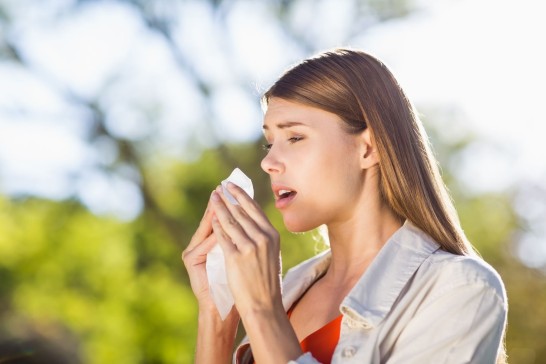
Managing Summertime Allergies
Various strategies can help manage the symptoms of seasonal allergies and make your summer a lot more enjoyable.
1. Awareness and Avoidance
Stay updated on local pollen forecasts available online such as the United Allergy Service Pollen Forecast or through mobile apps such as myAllergyPal®, and try to limit your outdoor activities on high pollen count days. Additionally, during these peak periods, keep your windows closed and use air conditioning to keep allergens at bay.
2. Allergy Medication
Over-the-counter antihistamines can be effective for relieving allergy symptoms like sneezing, itching, runny nose, and watery eyes. Decongestants may also help to relieve a stuffy nose. For those with severe symptoms, a provider may prescribe stronger medications or recommend allergy shots (immunotherapy).
3. Good Hygiene Practices
After spending time outdoors, be sure to shower and change into fresh clothes to remove any pollen that may have settled on your skin and clothing. It’s also beneficial to wash your hands often and avoid touching your face, especially your eyes, to prevent direct introduction of allergens.
4. Home Environment Care
Use high-efficiency particulate air (HEPA) filters in your home to trap pollen and other allergens. Regular cleaning and vacuuming also help to keep your indoor environment allergen-free.
The Solution: Lasting Allergy Relief
Despite best efforts to manage allergy symptoms, over-the-counter medications and preventative measures might not be enough for some individuals. In such cases, it’s crucial to take the next step—getting tested for allergies. By identifying specific triggers, you can not only avoid those allergens but also receive targeted treatment for more effective symptom relief.
Through your provider at an allergy center near you, United Allergy Services offers comprehensive allergy testing that can pinpoint the exact allergens causing your discomfort. This personalized approach allows for a more accurate diagnosis and effective treatment plan.
For some, the path to relief could lie in immunotherapy, a treatment approach that helps the body build tolerance to allergens. United Allergy Services offers allergy shots (subcutaneous immunotherapy) and allergy drops (sublingual immunotherapy) tailored to your specific allergen sensitivities. Over time, immunotherapy can help to reduce or even eliminate your allergic responses, enabling you to fully enjoy summer.
In conclusion, while summertime allergies can put a damper on this vibrant season, there are many avenues to manage and overcome them, including avoidance, medication, and medical treatments like immunotherapy. Don’t let allergies hold you back—explore options with your provider at a local allergy center to find the best treatment path for you.
FSA/HSA Plans for Allergy Services
Environmental allergies are a common ailment that affects approximately 50 million Americans every year. Whether you suffer from year round or just seasonal allergies, you may be able to use your tax-free FSA/HSA funds to help you save money on education, testing, and treatments. If you struggle with allergy symptoms—itchy eyes, congestion, and non-stop sneezing—you know how tough the spring and summer months can be. Over-the-counter drugs can help, but sometimes these remedies aren’t enough. As you compare options, you may notice the hefty price tag. Luckily, your health savings account (HSA) or flexible spending account (FSA) may offer some savings to your allergy relief.
What Exactly is an FSA or HSA Health Care Plan?
Flexible Spending Accounts (FSA) or Health Savings Accounts (HSA) are medical savings accounts with tax benefits, designed to allow you to set aside pre-tax savings to go towards your treatments, healthcare and other medical expenses.
Can I Use My FSA/HSA Plan for Allergy Testing?
For the majority of healthcare plans environmental and food allergy testing is an eligible FSA/HSA expenditure, meaning they allow the tests as a qualified medical expense. To make sure you're covered, we recommend getting in touch with your provider to confirm your inclusions.
A qualified medical expense is defined in IRS Publication 502 as the cost of treatment, cure, diagnosis, mitigation or prevention of a disease. The expense must be used principally to prevent or help ease the symptoms of a physical/mental illness or disability in order to meet the criteria for HSA and FSA. Environmental sensitivity tests work to identify allergic triggers that may cause discomfort and allow you to avoid or mitigate the exposure. Similarly, food sensitivity tests identify digestive issues so you can alter your diet to try and prevent things like bloating, nausea and stomach cramps.
Other Allergy Related Questions?
Our team wants to help you make the most out of your benefits before they expire on January 1st. Visit our FAQ page for more insight, or find an Allergy Center near you by clicking here.
Oral Allergy Syndrome
Delicious, ripe, mouthwatering fruits and vegetables are more plentiful during these summer months. However, that that summer breeze may carry more than just excitement for the season. Some people with environmental allergies may notice that certain fruits, vegetables, or nuts give them distinct allergic symptoms, typically confined to the lips, mouth and throat. This phenomenon is known as oral allergy syndrome (OAS).
Oral Allergy Syndrome
Oral allergy syndrome, or pollen food allergy syndrome, occurs when there is a cross reaction or a confusion in the body. Some fruits, vegetables, and nuts have a similar protein to the allergy-causing protein on the surface of the pollen grain. According to the American Academy of Allergy, Asthma, and Immunology (AAAAI), "These proteins can confuse the immune system and cause an allergic reaction or make existing allergy symptoms worse, which is referred to as cross-reactivity." It is a contact allergic reaction, but it also considered a mild food allergy.
Cross Reactivity
During the summer season, cross reactivity with grass and weed pollen most commonly triggers OAS. Timothy grass, orchard grass, and ragweed pollen tend to cause more reactions. Other grasses and weeds may also contribute to OAS symptoms. People with allergy to timothy grass and orchard grass may experience OAS when consuming foods like peaches, oranges, and tomatoes. Those allergic to ragweed pollen can experience symptoms when eating foods like banana, cucumber, zucchini, and some melons such as honeydew and cantaloupe. Watermelon and white potatoes can trigger a response in both grass and weed pollen sufferers equally.
Symptoms and Treatment
Typically, oral allergy syndrome symptoms present as itching or swelling in the mouth and throat. Symptoms can also be present on the face, lips, or tongue. While the symptoms usually appear immediately after eating raw fruits or vegetables, in rare cases the reaction can occur more than an hour later. Eating the food in the rawest or purest form usually triggers the more severe symptoms. Peeling, cooking, or baking the food can greatly reduce or eliminate a reaction all together.
For most people, the allergy symptoms are localized to their mouth and are uncomfortable or annoying. However, up to 9% of people have reactions that affect a part of their body beyond their mouth. About 1.7% can suffer a life-threatening allergic reaction or anaphylaxis. For this reason, it is crucial for people to determine what might be causing their symptoms with allergy testing and food journals. Avoid eating that allergy-causing food (especially in that foods peak allergy season). It is also beneficial to consider treating the underlying pollen allergy with immunotherapy.
Amanda Hofmann, MPAS, PA-C, is a graduate of Duquesne University, in Pittsburgh, Pennsylvania. After spending eight years in clinical practice, she joined United Allergy Services as the vice president of clinical. Amanda is also the past president of the Association of PAs in Allergy, Asthma, and Immunology.
United Allergy Services is also on Facebook, LinkedIn, or Twitter.
Summer Allergies
What do you look forward to in the summer months? I bet it isn't summer allergies! Whether you are planning to be the grill master or the ultimate host of the patio celebration, we have tips to help you prepare. Today, let’s discuss some common summer allergens you may encounter when enjoying the sun or attending summer celebrations.
During the summer months, many allergy sufferers are wary of grass pollen. They are the most common seasonal allergy triggers and are heaviest in May through August. Don't forget to check local pollen counts to determine the density of pollen in the air on any given day. Read more about Grass Pollen Allergies and avoidance tip in our blog post here.
Skin Reactions
With many summer celebrations occurring outside or around the pool, sunscreen is important to discuss. We all know sunscreen is a crucial part of summer safety, but sometimes it can cause a reaction much worse than a sunburn. Individuals can have a contact allergy to the sunscreen itself and a rash will appear where it was applied. A reaction that appears after applying the sunblock and being exposed to the sun is also possible. Apply a quick and simple patch test before applying the product to your whole body. Decide on a small area like the wrist, apply the product, and wait at least 24 hours to make sure the skin does not react.
Also, while chlorine isn't an allergen, it is an irritant and can cause problems with eye and nose itching. It can also cause breathing problems in people with asthma. If undesired symptoms are occurring while swimming, jump out of the pool. Take off your suit and wash the affected area with clean water and soap to remove traces of the remaining irritant. It is a good idea to have a rescue inhaler on hand, if prescribed to you, to calm any respiratory symptoms should they occur.
Stinging Insects
Stinging insects such as bees, wasps, hornets, and yellowjackets are most active during summer and early fall. Also fire ants are active all year round in many southern parts of the United States. People who know they are at risk for an allergic reaction to stinging insects should always carry two doses of auto injectable epinephrine. It is important to have the ability to access the injections within 60 seconds if necessary. Try to avoid the stings and bites before they occur by refraining from walking outdoors barefoot, especially in grassy areas. Skipping perfume or sweet-smelling body sprays or lotions is another good avoidance technique. Also, do not drink out of cans or bottles that have sat open and unattended. Sometimes insects can get trapped inside. Finally, when choosing the perfect outfit for the holiday weekend’s plans, leave any vivid, floral clothes in the closest.
Asthma Concerns
Fireworks, although beautiful and breathtaking, can create smoke and small particulate matter can trigger asthma. If you suffer from asthma, consider watching the fireworks from an indoor location. Similar to fireworks, smoke from grills, bonfires, firepits, or outdoor fireplaces can also trigger asthma. Try to avoid the direct smoke pathway, leave significant distance between yourself and the source of the smoke, Finally, other scented products utilized during outdoor gatherings can also contribute to air pollution and can trigger asthma. If hosting a party, contact your guests and ask if certain things like scented insect repelling candles or torch oil trigger negative responses for them.
Finally, what would a summer celebration be without all the tasty food and drinks? If food allergies are present, it may be easier to pack your own meals or snacks to have readily available. Preparing food yourself is always the safest option. If it isn't feasible to do so, you still have options. It is helpful as a host to ask about any food allergies or dietary restrictions when inviting guests to the event. It is also very helpful to label what individual dishes or offerings are and include a high-level recipe or ingredient list. That way guests can privately identify safe selections off the menu and enjoy immersing themselves in the full experience without the worry of unknown exposure.
Amanda Hofmann, MPAS, PA-C, is a graduate of Duquesne University, in Pittsburgh, Pennsylvania. After spending eight years in clinical practice, she joined United Allergy Services as the vice president of clinical. Amanda is also the past president of the Association of PAs in Allergy, Asthma, and Immunology.
United Allergy Services is also on Facebook, LinkedIn, or Twitter. See other interesting and related articles on the UAS Blog.
Eosinophilic Esophagitis (EoE)
Eosinophilic esophagitis (EoE) is a recognized diagnosis that produces symptoms related to dysfunction of the esophagus. In EoE, large amounts of white blood cells, specifically eosinophils, collect in the inner lining of the esophagus resulting in inflammation. Typically, the esophagus is free from eosinophils and resulting inflammation, and so in EoE, a patient will begin to notice a difference in the way they can eat and swallow food. This condition can be difficult to diagnose as other conditions can present with eosinophils in the esophagus, and historically EoE has not been a common or well-known disease. Awareness has significantly improved however in the last decade, and patients are being recognized and diagnosed much earlier. This week, the FDA has approved the first ever treatment for EoE.
Symptoms of EoE
Many EoE patients also have symptoms of one or more allergic disorders like asthma, allergic rhinitis, atopic dermatitis (eczema) and food allergy. It is important for EoE patients to be properly assessed and tested for potential allergens as well as properly diagnosed for their atopic conditions. Similar to proper diagnosis, it is crucial that any and all allergic aspects of EoE can be properly treated in conjunction with management of the EoE. Patients benefit from a team of providers working together such as a primary care provider, allergy specialist, and gastroenterology specialist.
Early diagnosis of this chronic condition is important so patients can be educated and properly managed, sparing them from discomfort, malnutrition, and even life-threatening situations. An emergent situation can arise if inflammation becomes too great and causes narrowing in the esophagus, trapping swallowed food. In younger children, EoE typically presents with poor feeding, failure to grow properly, vomiting, reflux symptoms, and abdominal pain, whereas in adolescents and adults EoE most often presents with dysphagia (trouble or painful swallowing) and emergent esophageal food impactions.
Allergy Correlation
Airborne allergies can play a role, however adverse immune responses to food are the main cause of EoE in many patients. It can be more difficult to properly diagnose food allergies in EoE patients because many do not present with the typical symptoms associated with IgE mediated food allergy. Instead of immediate itching, flushing, hives and vomiting after ingestion of the offending food, the reactions can be delayed over hours or days. Milk, egg, soy and wheat are recognized as the most common triggers for EoE, however, conventional allergy tests often fail to detect sensitivity to the foods causing EoE. This is because most food allergy reactions in EoE are delayed and caused primarily by immune mechanisms other than classical IgE-mediated food allergy.
Diagnosis
Other than proper identification and diagnosis of atopic conditions, EoE must also be properly diagnosed itself as a disease. If EoE is suspected, a specialist performs an upper endoscopy, where a small tube with embedded camera is passed down the esophagus. The tube not only has a camera and light for inspection, but a small device to take samples, or biopsies of the esophagus. The biopsies of the esophagus are examined under a microscope for eosinophils and inflammation and are necessary to diagnose EoE. A provider looks for appropriate symptoms that were described above, visual inspection of the esophagus, and examination of tissue biopsies to make the final diagnosis of EoE.
Managing EoE
There are many viable options to managing EoE effectively. Food sensitivities or allergies can be managed by removing those offending foods from a person’s diet, but only under the direct guidance and supervision of a provider. A provider can advise eliminating a specific food, or a food group based on individual history, examination, and diagnosis. This elimination approach can be helpful to some, but it is important to only remove what is advised, and a medical provider will closely monitor a person and regularly discuss nutrition and intake. Many times, a dietician is added to the medical care team to make sure a person is still receiving all the necessary nutrients. A provider’s goal is to carefully add back any foods that can in fact be tolerated and are proven not to incite eosinophils in the esophagus.
Aside from adjustments to a person’s diet, there are some medications providers use to help provide symptom relief and management of the EoE. It is important to note that aside from the first medication being approved by the U.S. Food and Drug Administration (FDA) to treat EoE, typical options for treatment include proton pump inhibitors and steroids. Proton pump inhibitors (PPIs) reduce acid production in the stomach and have also been found to be able to reduce esophageal inflammation in some patients with EoE. PPIs are very commonly used as a frontline therapeutic for EoE patients. If PPIs do not work for a patient, another option may be swallowed topical corticosteroids. Swallowing small prescribed doses of corticosteroids so they come in direct contact with and treat the inner lining of the esophagus is the most common treatment.
Amanda Hofmann, MPAS, PA-C, is a graduate of Duquesne University, in Pittsburgh, Pennsylvania. After spending eight years in clinical practice, she joined United Allergy Services as the vice president of clinical. Amanda is also the past president of the Association of PAs in Allergy, Asthma, and Immunology.
United Allergy Services is also on Facebook, LinkedIn, or Twitter. See other interesting and related articles on the UAS Blog.
Allergies, Asthma, and Air Quality
As we move into the summer months, it is important to understand the connection between allergies, asthma, and air quality. While air pollution does not directly cause allergy or asthma, it can increase the risk of developing atopic disease. Air pollution can also trigger allergy or asthma symptoms or an asthma attack for persons with existing conditions. Air pollution usually increases during summer months. This pollution leads to an increase in related symptoms, urgent office visits, and emergency room visits.
Air Quality Components
Allergy and asthma symptoms can be triggered by two key air pollutants, ozone (found in smog) and particle pollution (found in haze, smoke, and dust).
- Ozone, a gas, is one of the most common air pollutants, contributes to smog, and is more common in cities where there are a lot of cars. In the summer months ozone can increase when intense sunlight and heat convert a mixture of tailpipe and power plant emissions with other chemicals resulting in unhealthy air. Allergy and asthma symptoms may trigger more easily because ozone is irritating to the lungs and can reduce lung function.
- Particle pollution is present and stable throughout the year but is typically worse near busy roads, during rush hour and around factories. It is also high when there is smoke in the air from wood stoves, fireplaces, or burning vegetation. These small particles can irritate the nose, throat, and especially the lungs, and also reduce lung function and cause asthma exacerbations.
Air Quality Reports
The United States Environmental Protection Agency (EPA) reports air pollution levels using the Air Quality Index (AQI). AQI reports the level of ozone and other air pollutants. When the AQI is 101 or higher, it is dangerous for people with allergies and especially asthma. Sometimes asthmatics can experience increased symptoms even when ozone levels are moderate (AQI 51-100). Many local news stations and weather forecasters report local air quality to advise the public about moderate or high pollution days.
Another resource, The American Lung Association has just released their annual State of the Air report. One interesting finding in the report is, “The addition of 2020 data to the 2022 “State of the Air” report gives a first look at air quality trends during the COVID-19 pandemic. Regardless of the shutdowns in early 2020, there was no obvious improvement.”
Combatting Air Quality Conditions
When air quality may be dangerous to people with allergies or especially asthma, they are deemed as “Action Days”. During Action Days, people with asthma should limit their time outdoors, especially in the afternoon or rush hour periods, stay in a well-ventilated, preferably air-conditioned, building, and most of all, do not intensely exercise outdoors. Also try to keep windows closed in your home and car, and instead utilize the air conditioning on the recycled setting.
There is also a risk that you could have poor indoor air quality within your home. Irritants can exacerbate allergy and asthma symptoms. These and allergy and asthma triggers are common items such as:
- household cleaners
- hair products
- perfumes
- air freshening sprays or plug ins
- scented candles/diffusers
- smoke produced from
- tobacco
- fireplaces
- candles
- cooking
- wood burning stoves
Not smoking or permitting smoking in the home is one of the easiest ways to protect the home from indoor air pollution. Finally, be mindful of high humidity and mold growth. These two factors can greatly impact indoor air quality. Installing exhaust fans in kitchens, bathrooms, and laundry rooms can help lower humidity. The use of a dehumidifier helps significantly as well.
Amanda Hofmann, MPAS, PA-C, is a graduate of Duquesne University, in Pittsburgh, Pennsylvania. After spending eight years in clinical practice, she joined United Allergy Services as the vice president of clinical. Amanda is also the past president of the Association of PAs in Allergy, Asthma, and Immunology.
United Allergy Services is also on Facebook, LinkedIn, or Twitter. See other interesting and related articles on the UAS Blog.
Earth Day and Climate Change Effects
Earth Day is this Friday, April 22nd. Earth Day is truly a mainstay in American culture, created by Past-President Richard Nixon. This year the Earth Day theme is “Invest in Our Planet”. We are called upon to have “unstoppable courage to preserve and protect our health, our families, our livelihoods…” One of the continued focal points of interest is trying to put a dent in rising global temperatures, with an average increase of 2.4 degrees Fahrenheit in the last 50 years. It doesn’t sound like a lot, but each degree brings bigger changes than many realize. The rising temperatures have a directly negative impact on allergy sufferers and those offering optimal allergy care to their patients.
Effects on the Planet
Warming temperatures results in longer growing seasons. Although people tend to enjoy nature’s natural beauty a bit longer, and farmers have additional time to harvest crops, the increase in temperatures prolong and worsen the suffering of those with pollen allergies and can cause an imbalance in the optimal growth range for crops and cause foods shortages.
Different plants require different conditions to grow, and when the climate continually changes, so do the arrangements and floristic zones of the world’s plants. As the planet warms, we continue to see the planting zones where these plants grow will continue shifting north. Shifting planting zones threaten things like accurate allergy testing panels, cocoa beans for chocolate producers, coffee beans, and maple syrup. Plant species, being entirely mobile beings, will be forced to move upslope or downslope, or species with arrange themselves in new combinations entirely. Finally, the rising temperatures also negatively impact plants by impacting the pollinators that assist with their growth. Warmer temperatures and changing climates have negative effects on pollinator species like butterflies and honeybees. This further shift growing and blooming seasons and further weakens the plant populations.
Allergy Amplification
As the planet warms, allergy season tends to begin earlier and last longer each year. Talk to your primary care provider about allergy testing and treatment options if you notice that your allergies are worsening. You may be a great candidate for immunotherapy, a solution to change the source of your allergy misery rather than treating just the symptoms.
Amanda Hofmann, MPAS, PA-C, is a graduate of Duquesne University, in Pittsburgh, Pennsylvania. After spending eight years in clinical practice, she joined United Allergy Services as the vice president of clinical. Amanda is also the past president of the Association of PAs in Allergy, Asthma, and Immunology.
United Allergy Services is also on Facebook, LinkedIn, or Twitter. See other interesting and related articles on the UAS Blog.
Easter and Passover Allergy Concerns
The Easter and Passover holidays are here! Holidays mean family centered fun, festive meals, and usually sweet treats to enjoy. For allergy suffers, however, holidays like Easter and Passover can be challenging to navigate with traditional holiday foods containing hidden allergies, and the high tree pollen counts over most of the country by this time. Aside from the usual pollen and food allergies, brightly dyed eggs, household pets, and sweet baby chicks and bunnies can also wreak havoc on the nose and chest. Here are some tips to navigate the upcoming holidays and ensure that you and your family have a safe and happy holiday.
Traditional holiday meals are at the cornerstone of Easter and Passover. Plan the meals out in advance and be mindful of any guests that may have a food allergy. Be flexible and try to switch ingredients for allergy-friendly alternatives, eliminate a recipe from the menu altogether, or take care to prepare allergy-friendly dishes separately from the other meals. If you are not sure whether guests have a food allergy, consider printing recipes out for each of the dishes and allow people to determine if it’s a safe food for them to indulge in. Also consider avoiding a buffet style offering, or separating allergen safe foods from allergen containing foods in two different areas or tables.
These spring holidays typically mean chocolate and sweet treats to younger members of the family, or those young at heart. Try to again consider those guest and family members that may have allergies to things like chocolate, so they are not left sitting on the sidelines. Allergy to chocolate itself, or the cacao bean, is incredibly rare, however more commonly the offenders are milk, peanuts, tree nuts, soy, and corn. A little research will provide an array of options of dairy free or peanut/tree nut free brands of treats. Always check labels to see if the offending food in contained in the ingredients list, or mentions it was produced in a facility that also processes other allergen containing foods putting your loved one at risk of cross contamination. Keep in mind most chocolate does contain soy in the form of soy lecithin to keep it solid at room temperature, and white chocolate commonly contains corn in the form of corn syrup. If the treats offered are of the homemade variety, it can be even more challenging for a food allergy sufferer due to lack of label to research ingredients. If you suffer from food allergies, a good rule to follow if “If you can’t read it, don’t eat it”. Plan to bring some of your own safe snack or goodies, unless you can make sure your host prepared foods allergen free, safely away from other allergen containing food, and on a separate and thoroughly cleaned surface. In lieu of store bought or homemade edible treats, consider offering nonfood items for younger guests such as books, sporting goods, stickers, novelty items, or toys.
Although most food allergens are most offensive if ingested, it is important to consider that some people do have reactions or develop irritations from contact exposure to egg or the dyes used to make them bold and bright. If colorful dyed egg hunts are part of your spring holiday tradition, there are alternative ways to include everyone on the fun. Instead of coloring eggs with traditional eggs and traditional dye, consider eggs made of wood, ceramic, or plastic, and consider natural dye alternatives. Other options include making gelatin eggs, egg sugar cookies for decorating, or decorating marshmallows in place of eggs. Also, consider replacing the hard-boiled egg on the Passover Seder plate with a ceramic or plastic egg to keep guest anxiety free.
If the above-mentioned allergies are life threatening for you or a loved one, always make sure to carry a minimum of two epinephrine auto injectors if it is prescribed. Make sure the epinephrine autoinjector is carried in a way it can be accessed and administered within 60 seconds of a need arising. If you or a loved one does have life threatening allergies, it is always a good idea to check with your health insurance and ensure you know where to seek medical care should the need arise if celebrating the Spring holidays out of town.
Food allergens typically are the easiest to keep front of mind during the Easter and Passover holidays, however equally as difficult for allergy suffers and arguably more difficult to avoid are the tree pollens and mold spores blowing in the air. These unwanted guests can ruin any picnic or outdoor gathering with nasal, sinus, eye, and chest symptoms. If there is both indoor and outdoor venues at the celebration location, try to minimize the time spent outdoors. If you are hosting the celebration, try to offer an indoor haven if planning to spend time outdoors, as well as keep windows and doors closed at the indoor space. Also, minimize the exposure to outdoor allergens while traveling to the destination by keeping windows up in the car and instead using the air conditioning.
It is a good habit to always check pollen counts for the area where you will be celebrating, and if planning the celebration try to plan for it to start mid-day or later due to peak pollen times typically occurring in the first half of the day (specifically 5am 10am). Also, it would be beneficial to plan the event outside of heavily grassy areas or those densely populated with trees. This may help to decrease the concentration of allergens in the air. If the celebration will be entirely outdoors with no indoor refuge, it is a good idea to make sure you are on top of your allergy medication or immunotherapy regimen before going, and make

sure to pack a few changes of clothing as well as wet wipes for the ability to remove pollen from your immediate environment every few hours. Once you return home from the festivities, plan to shower or bathe before prioritizing any other activities. It is especially important to bathe before crawling into bed, to remove any allergens that have adhered themselves to your skin or hair. This is especially important before allowing them to have access to your pillow or sheets and being in the immediate space and air you breath in all night.
Many people choose to show their appreciation to their host or show their love to their family by bringing beautiful spring flowers or plants to the Easter or Passover celebration. Unfortunately, people can have severe symptoms such as sneezing, along with nose and eye itching and watering related to the pollen, or just the smell of particular flowers. Even an asthma attack can be triggered from them. According to the American College of Allergy, Asthma and Immunology, there are many flowers you can get at a florist that produce little pollen. Look for tulips, roses, begonia, columbine, crocus, daffodil, and geraniums if you want to be safe.
We cannot forget about the cherished furry family members that may be in attendance for the spring holiday celebration, as well as the propensity to give the give of baby chicks or bunnies this time of year. Dander, saliva, sweat, and urine from adorable dogs, cats, and even bunnies can trigger an allergic response in some people. If possible, try to keep pets confirmed to only a certain area of the celebration so that those that wish to enjoy them can, while those that are unable can find refuge elsewhere. Make sure to thoroughly wash your hands before returning to an animal free area of the celebration, before partaking in shared food items, or before touching your face, mouth, or eyes. Also, make sure the recipient of a new spring pet is not triggered by them. Although recent literature has shown us a true allergy to bird feathers is rare, there are substantial amounts of dust mites found in feathers that can trigger unwanted allergy symptoms.
If you or a loved are unsure whether tree pollen, grass pollen, mold spores, dust mites, or animal dander are potential allergy triggers and the cause of the nasal congestion, runny nose, post nasal drip, sneezing, and itchy watery eyes you have been suffering with, seeing your provider for an allergy test may provide the clarity they are looking for! Some providers may have the ability to access food concerns as well! And if you are already aware of true allergy triggers, but the spring allergy medication and avoidance measures are just not cutting it, there is still time to see your provider and discuss starting allergen immunotherapy.
Amanda Hofmann, MPAS, PA-C, is a graduate of Duquesne University, in Pittsburgh, Pennsylvania. After spending eight years in clinical practice, she joined United Allergy Services as the vice president of clinical. Amanda is also the past president of the Association of PAs in Allergy, Asthma, and Immunology.
United Allergy Services is also on Facebook, LinkedIn, or Twitter. See other interesting and related articles on the UAS Blog.
Botanical Sexism: Does it impact allergy sufferers?
What is Botanical Sexism? Tom Ogren, horticulturist and allergy researcher, has done extensive research on ways to reduce pollen counts and pollen potency. His theory centers around the unbalanced planting of male vs female plants. This unbalance can impact pollen counts and the resulting escalation of pollen allergies. He wrote and published an article in Scientific American, coining “botanical sexism” to explain his theory. Ogren believes a better mix or “gender balance” of male and female trees, especially in urban settings, would lower pollen counts.
Ogren’s article focuses on the foundation set in the 1949 USDA Yearbook of Agriculture which reads, “When used for street plantings, only male trees should be selected, to avoid the nuisance from the cottony seed.” This idea comes from the fact that male trees produce pollen, and female trees receive that pollen and produce fruit and seeds. It was recommended to plants primarily or all male tress to avoid messy sidewalks and parks from the flowering female trees that would drop their seeds and fruits.
Tree System Selection
Is botanical sexism a natural selection? Trees have four primary sexual systems: cosexual, monoecious, dioecious and polygamous. A tree that produces single flowers with combined fully functional male and female parts
is called cosexual. Monoecious trees similarly have both male and female parts within the same tree, however they separate the male and female parts into different flowers or cones on the same tree. Dioecious trees separate male and female parts on completely different trees where one tree is strictly female and one strictly male. These trees were Ogren’s primary focus. And for completeness we will define polygamous trees as the most complex and as cosexual, with male and female flowers on the same tree but also with separate male and female parts in different combinations on completely different trees.
Ogren’s work focuses on dioecious males planted independently of dioecious females. This is often the case in urban areas due to the cleanliness concern described above. When this occurs however, their pollen is unchecked by any capture by female flowers and causing copious amount of pollen to be distributed in the air to cause coughing, sneezing, and respiratory issues. Tree pollen is one of the greatest offenders of not only allergic rhinitis, but also allergic conjunctivitis and allergic asthma as well.
Pollen Count Impact
Botanical sexism referenced higher pollen counts due to failed tree “gender balance”, and is further exacerbated by higher pollen potency. Studies have shown that air pollution (which tends to be higher in urban settings) attaches to pollen grains and causes the powdery substance to shatter into still tinier pieces. “When that happens the inside of the pollen grain is exposed and that’s 10 times more allergenic than the outside,” explained Ogren. This is again exacerbated by increasing CO2 levels which causes plants to bloom at a faster rate and at a higher content which means even higher pollen counts where predominantly male trees reside.
Purpose of Defining Botanical Sexism
Prime allergy season is usually defined as mid-March to early June in most of the United States. Frequency of allergic rhinitis (AR) diagnosis increase greatly during this season. AR affects more than 400 million people worldwide, and is expected to rise by another 100 million by 2025. Ogren collected extensive data, and by 2000 was able to develop a scale called OPALS (Ogren Plant Allergy Scale) that ranks more than 3,000 plants from 1 to 10 based on how allergenic they are. This was the first numerical ranking system in existence for plant allergies and is used to develop allergy rankings in large US cities.
Ogren’s work is meant to encourage city planners, plant distributors, and homeowners to think carefully about their plant choices. He feels we all are all responsible for the rising numbers of allergy sufferers, and we, by making the correct plant choices, can at least reduce the amount of allergenic pollen in the air. Examples of plants that are allergy-friendly include pansies, impatiens and snapdragons.
Amanda Hofmann, MPAS, PA-C, is a graduate of Duquesne University, in Pittsburgh, Pennsylvania. After spending eight years in clinical practice, she joined United Allergy Services as the vice president of clinical. Amanda is also the past president of the Association of PAs in Allergy, Asthma, and Immunology.
United Allergy Services is also on Facebook, LinkedIn, or Twitter. See other interesting and related articles on the UAS Blog.
Tree Pollen and Pollen Counts Explained
March is here, and so is Spring! Spring has officially started which brings longer days, refreshing rain showers, bright colorful flowers, and of course…tree pollen!
The majority of trees typically produce tree pollen as early as January in the Southern United States. The Northern and Central areas follow suit with pollen production kicking off in February and continuing through June. The milder the winter season, the earlier the trees begin producing pollen. Even late winter or early spring snowfall leads to pollen production by producing copious amounts of moisture when it melts which allows a greater volume of pollen production. However, there is an outlier. The Ashe Juniper Tree (commonly referred to as Mountain Cedar) wreaks havoc in Oklahoma and Texas as early as late November or December.
Tree Pollen
Pollen is a small powdery substance made up of small spores that come from male trees and flowers. There are two primary types of pollen, the first is “Sticky Pollen”. This pollen is produced by plants and trees that have bright and attractive flowers. This is the type of pollen that sticks to bees and is transported during flight, fertilizing other plants. These bright flowers are commonly thought to be spring allergy offenders, however, because they do not release much pollen into the air they are not likely the culprit of allergy symptoms. The other type of pollen, however, is “Wind-Blown Pollen”. This pollen comes from larger trees like pine and oak. The pollen is released in large quantities into the air, fertilizing other trees of the same species. The tree pollen that typically causes well-known nasal congestion, runny nose, and itchy eyes is typically the wind-blown pollen. This pollen is very small, light, and easily spread by the wind for miles and miles.
Those that suffer from allergies can greatly benefit from checking their local pollen counts to determine the density of tree pollen in the air on any given day. Pollen counts go up and down by the season and even fluctuate within a single day. Pollen count is a measure of the average number of pollen grains per cubic meter2, and is usually determined by collecting pollen on special greased silicone rods. The pollen is collected for a certain period, usually about 24 hours, and then counted under a microscope. The pollen count is then calculated in grains per cubic meter of air. These findings are then published in user friendly terms such as: low, moderate, or high counts so the general public can decide how to plan their day.
Pollen Counts
Pollen counts tend to rise early in the day and peak around midday. Often there is an increase in pollen when the wind picks up just before a large rainstorm. If you like dancing in the rain, or jumping in rain puddles, however, you are in luck! During a rainstorm and immediately following, pollen becomes still and dormant due to the rain making it damp and heavy. As the air becomes warm and dry following the storm, the pollen count will become potent again.
Those with tree pollen allergies should try to avoid heavily dense wooded areas, especially in early spring when pollen is the most dense and abundant. Also, those with tree pollen allergies should give careful thought into which trees they are planting in their yard this year. Major tree offenders that should be skipped over at the nursery are oak, birch, maple, cedar, juniper, and eucalyptus (unless you can guarantee they are female trees). Instead, look for friendlier species such as dogwood, pear, plum, redbud, or crape myrtle.
Pollen counts are never zero, nor will an allergy sufferer truly be able to avoid tree pollen in the spring. However, some practices will help to decrease pollen exposures, such as: utilizing the air conditioner, keeping the windows and doors of the home and car closed, and utilizing the dryer rather than the fresh breeze to dry clothing. Also, one benefit COVID-19 may bring allergy sufferers is the regular use of a face mask. Most face masks will help to minimize the amount of pollen reaching the nasal passages if being worn in outdoor settings. Tree pollen allergy suffers should also make a habit of changing their clothes after coming in from being outdoors, and bathing prior to getting into bed or laying on upholstered furniture.
If someone is unsure whether tree pollen is a trigger for their spring nasal congestion, runny nose, post nasal drip, sneezing, and itchy watery eyes, taking an allergy quiz and seeing their provider for an allergy test may provide them with more clarity!
St. Patrick's Day, Green Beer, and Wheat Allergy
St. Patrick's Day is fast approaching! Are you wondering if your wheat allergy will get in the way?
History of the Holiday
In Ireland, the holiday was created as a way to honor the country's patron saint and a time to cut loose during the Catholic Lent season. Today, the holiday is honored in myriad of ways around the world to celebrate all things Irish. From preparing classic Irish food to setting leprechaun traps, young and old alike look for the luck o'the Irish on March 17. Many adults may even enjoy a clover green colored beer as they celebrate. While I assumed this was a modern tradition, during my research I discovered that green beer is over a century old!
According to IrishCentral, an Irish American New York City coroner named Dr. Thomas Hayes Curtin gets credit for this discovery. He unveiled his invention of a beer the color of shamrocks at a Bronx social club in 1914. The doctor used “wash blue” in a light ale to liven up the celebration. Unlucky for his family, friends, and colleagues, however, the “wash blue” was also, in fact, poison. This substance is an iron powder solution used to whiten clothes. Thankfully, more than a century later, green beer prevails, and this Irish American’s invention continues. Now a few drops of green food coloring give the beer that glorious emerald hue instead of wash blue.
Wheat Allergy and Beer
I recently was asked whether those with a wheat allergy could partake in the green beer tradition. According to the AAAAI, there are a variety of reasons someone may experience a reaction while consuming beer:
The most frequent causes of reactions to beer are either IgE-mediated reactions to barley/hops or a reaction to the alcohol itself. This alcohol reaction is quite often due to acetaldehyde dehydrogenase 2 deficiency. Acetaldehyde dehydrogenase 2 is the enzyme that metabolizes the first metabolic product of alcohol digestion, acetaldehyde. When acetaldehyde accumulates, it produces mast cell degranulation, and therefore its symptoms mimic an allergic response. Although not as prevalent, there can be reactions to rye, wheat, yeast, or molds. In addition, some beers may contain additives such as sulphites, sodium benzoate, or tartrazine that can cause sensitivities. Some craft beers also contain, fruit and nut extracts or dairy. Any of these ingredients can cause discomfort or reactions in someone with a food allergy or sensitivity to one of them.
If someone has a wheat allergy specifically however, there are several wheat free beers available. You can find a great list allergy-insight.com with additional insight to ingredients such as oats, brown rice, corn, or sweet potatoes. You may consider hosting a St. Patrick’s Day party at your home, purchasing a wheat free pale beer, and adding as much green food coloring as you wish. If out and about for the holiday, make sure to talk with the brew master about your selection. Better yet, order a beer in a bottle to view the ingredient list yourself!
Amanda Hofmann, MPAS, PA-C, is a graduate of Duquesne University, in Pittsburgh, Pennsylvania. After spending eight years in clinical practice, she joined United Allergy Services as the vice president of clinical. Amanda is also the past president of the Association of PAs in Allergy, Asthma, and Immunology.
United Allergy Services is also on Facebook, LinkedIn, or Twitter. See other interesting and related articles on the UAS Blog.
Shake off the winter blues!
Winter blues setting in? Dreaming of springtime? Well, the wait is almost over! March is a week away, and that means Spring is on its way! Longer days, long walks in the garden, and rain showers and rainbows are on the horizon. The meteorological calendar says spring begins March 1st, but the astronomical calendar says spring begins on the vernal equinox, which this year is March 20th! Regardless of which calendar you follow, tree pollen, the main culprit of the sniffles and sneezes during spring allergy season, is already starting to make an appearance!
Trees typically start producing pollen as early as January in the Southern U.S., and the Northern and Central areas follow with pollen production sometime in February. However, one outlier, the Ashe Juniper Tree (commonly referred to as Mountain Cedar) wreaks havoc in Oklahoma and Texas as early as December. Many trees keep producing pollen through June. The milder the winter season, the earlier the trees will begin producing pollen. Even late winter or early spring snowfall leads to pollen production by producing copious amounts of moisture when it melts which allows a greater volume of pollen production.
Pollen is a small powdery substance made up of small spores that come from male trees and flowers. There are two primary types of pollen, the first is “Sticky Pollen”. This pollen is produced by plants and trees that have bright and attractive flowers. This kind of pollen is the type that sticks to bees and is transported during flight, fertilizing other plants. These bright flowers are commonly thought to be spring allergy offender, however because they do not release much pollen into the air they are not as likely the culprit of allergy symptoms. The other type of pollen, however, is “Wind-Blown Pollen”. This pollen comes from larger trees like pine and oak. The pollen is released in large quantities into the air, fertilizing other trees of the same species. The tree pollen that typically causes the well-known nasal congestion, runny nose, and itchy eyes is typically the wind-blown pollen. This pollen is very small and light, and easily spread by the wind for miles and miles.
Those that suffer from allergies, can benefit from checking their local pollen counts, to determine the density of pollen in the air on any given day. Pollen counts are determined collecting pollen on special rods. The pollen is then counted under a microscope. The pollen count is then calculated in grains per cubic meter of air. Pollen counts tend to be the highest early in the day, or often when the wind picks up just before a large rainstorm. If you like dancing in the rain, or jumping in rain puddles, however, you are in luck because during a rainstorm and immediately following, pollen becomes still and dormant due to the rain making it damp and heavy. As the air becomes warm and dry following the storm, the pollen count will become potent again.
Those with tree pollen allergies should try to avoid heavily dense wooded areas, especially in early spring when pollen is the most dense and abundant. Also, those with tree pollen allergies should give careful thought into which trees they are planting this year in their yards. Major tree offenders that should be skipped over at the nursery are oak, birch, maple, cedar, juniper, and eucalyptus (unless you can guarantee they are female trees). Instead, look for friendlier species such as dogwood, pear, plum, redbud, or crape myrtle.
Pollen counts are never zero, nor will an allergy sufferer truly be able to avoid tree pollen in the spring. However, some practices like utilizing the air conditioner and keeping the windows and doors of their home and car closed and utilizing the dryer rather than the fresh breeze to dry clothing will help to decrease pollen exposures. Also, wearing of some masks will help to minimize the amount of pollen reaching the nasal passages if being worn in outdoor settings. Tree pollen allergy suffers should also make a habit of changing their clothes after coming in from being outdoors, and bathing prior to getting into bed/laying on upholstered furniture.
If someone is unsure whether tree pollen is a trigger for their spring nasal congestion, runny nose, post nasal drip, sneezing, and itchy watery eyes, seeing their provider for an allergy test may provide the clarity they are looking for. And you do not need to wait until spring! Now is the perfect time for allergy testing, BEFORE spring season is in full force.
If you are currently experiencing itching eyes, coughing, sneezing, runny nose, or congestion, your provider won’t leave you out in the cold! There is no better way to beat the winter blues by planning ahead for a great spring! A spring free of the burden of allergies! Whether you are currently suffering from winter allergies, or wanting to get a jump on spring allergy symptom prevention, typically this time of year providers can get you in quickly. If you are unsure if allergies are the cause of your symptoms, needleless allergy testing an offer an accurate diagnosis within minutes in the office. There are certain medications that should be temporarily avoided so that the results of the allergy test will be accurate. Make sure to talk to your provider prior to scheduling your allergy test visit to learn about which medications you may need to hold. Many symptom controlling allergy medications typically need avoided prior to allergy skin testing and so getting tested now before spring allergy symptoms are in full swing is helpful! Consider getting tested now, before symptoms are in full force and the thought of withholding medications that get you temporarily through the day seems impossible.
And whether an allergy diagnosis is brand new, or you are a long time suffering allergy veteran, your provider can also develop an individualized treatment plan, such as immunotherapy. Allergen immunotherapy can reduce or eliminate your need for medications.
Allergy is a chronic or long-term condition. Many allergy patients forget what it feels like to be well or symptom free. Allergen immunotherapy unlike medications is a natural long-term way to both treat and prevent allergies. This benefits you in symptom control and feeling better, but even more importantly in preventing the development of other allergies or asthma. Medications on the other hand are used for short-term symptom reduction rather than prevention or long term treatment. Many people, including children, also suffer side effects, some life threatening from these medications.
Six More Weeks of Winter
The first official Groundhog Day celebration took place on February 2, 1887, in Punxsutawney, Pennsylvania, and was the brainchild of local newspaper editor Clymer Freas. He sold a group of businessmen and groundhog hunters on the idea of gathering around the inaugural famous groundhog to see whether he saw his own shadow or not. Similar to this Groundhog’s Day just last week on February 2, 2022, the inaugural groundhog saw his shadow.
Punxsutawney Phil, as the groundhog is lovingly named, has promised all six more weeks of winter. Studies by National Climatic Data Center and the Canadian weather service have yielded a dismal success rate of around 50 percent accuracy for Punxsutawney Phil however, we are optimistic in Phil’s accuracy and hope to prepare everyone for additional exposures to winter allergens.
Winter weather and freezing temperatures do bring an end to seasonal pollen allergies, but millions of people are still living with winter allergies. Winter allergens, like indoor molds, dust mites, cockroach dander, and animal dander tend to increase in the home this time of year. Furnaces help to circulate airborne dust that is shaken loose from those much-anticipated holiday decorations coming out of the basement or attic. And indoor gatherings will continue to keep people warm but also exposed to the high concentration of these indoor winter allergens.
- Dander It’s the dander (dead skin flakes), or saliva, not the hair of household pets such as cats and dogs, that can cause allergic reactions
- Dust Mites These microscopic bugs might be the most common cause of year-round indoor allergies, notes the Allergy and Asthma Foundation of America. Dust mites thrive in bedding, carpeting, and the upholstered furniture inside your home.
- Indoor Mold We all breathe in mold spores, but for those with an allergy, exposure can trigger sneezing, congestion, and itchiness. Mold and mildew favor damp areas, like basements and bathrooms.
- Cockroach Droppings These persistent pests can live anywhere, and while they’re not a sign of an unhygienic or unsanitary household, it’s important to keep food well-contained and be vigilant about cleaning up crumbs. Fixing leaky faucets and pipes and sealing up cracks and crevices in your home can help keep cockroaches away
If you are currently experiencing itching eyes, coughing, sneezing, runny nose, or congestion, your provider won’t leave you out in the cold! Whether you are currently suffering or wanting to get a jump on spring allergy symptom prevention, typically this time of year providers can get you in quickly. If you are unsure if allergies are the cause of your symptoms, needleless allergy testing an offer an accurate diagnosis within minutes in the office. And whether an allergy diagnosis is brand new or you are a long time suffering allergy veteran, your provider can also develop an individualized treatment plan. Allergen immunotherapy can reduce or eliminate your need for medications.
Allergy is a chronic or long-term condition. Many allergy patients forget what it feels like to be well or symptom free. Allergen immunotherapy unlike medications is a natural long-term way to both treat and prevent allergies. This benefits you in symptom control and feeling better, but even more importantly in preventing the development of other allergies or asthma. Medications on the other hand are used for short-term symptom reduction rather than prevention or long term treatment. Many people, including children, also suffer side effects, some life threatening from these medications.
Allergy sufferers who also have asthma should be aware asthma symptoms can also become worse in the winter! Asthma symptoms can worsen due to cold and flu season, cold air outside, warm fires in fireplaces inside, and increased indoor allergens like we discussed previously.
Winter allergy sufferers can use a humidifier to reduce dryness in the air, but don't turn your home into a rain forest. Dust mites can thrive in humidity over 60 percent and temperatures of 60 to 85 degrees Fahrenheit. Mold also grows faster in high humidity. Rank recommends a maximum humidity of 50 percent. Is possible avoid wall-to-wall carpeting, which provides a favorable environment for dust mites. Use area rugs instead or hard wood/cement floors instead. Clean regularly, using a vacuum with a high-efficiency particulate air (HEPA) filter. Wash sheets weekly in hot water — at least 130 degrees Fahrenheit — to kill dust mites and use hypoallergenic cases for mattresses and pillows to keep dust mites trapped. Finally, minimize dander by bathing pets once a and try keep animals out of the bedroom or on the bed of anyone in the house who has allergies.
The BIG 9: Food Allergens
For the last 17 years, the official list of major food allergens, or “The Big 8” has consisted of milk, egg, fish, shellfish, peanut, tree nut, wheat, and soy. The Big 8 were part of legislation that was signed into law in 2004 requiring manufacturers to indicate on labels when a product was made using any of those eight ingredients, describing them as “major food allergens” because they collectively accounted for “90 percent of food allergies.” Now, sesame will take the coveted ninth spot nationally, as well as soon join the UAS panel of food allergens offered to providers for allergy testing.
On April 23, 2021, the Food Allergy Safety, Treatment, Education, and Research (FASTER) Act was signed into law, declaring sesame as the latest addition to The Big 9 major food allergens recognized by the United States. Effective on January 1, 2023, clear and regulated labeling of sesame as an allergen will be required whereas previously sesame could be labeled as “spices”, “natural flavor”, or “artificial flavor”. This understandably makes it challenging to identify sesame in food products.
Why Sesame?
Currently, more than 1 million people in America are allergic to sesame, according to a 2019 study published in the journal JAMA (the Journal of American Medical Association). Like other food allergens, sesame allergy can produce mild allergy symptoms like itching or hives, however it also has the potential to trigger anaphylaxis, and pose a life-threatening risk to those allergic to it. A sesame allergy is caused by a protein found in the edible seeds of the sesame plan, and therefore also in products made from the seeds such as sesame oil. People allergic to sesame must also watch for ingredients such as tahini, sesamol and gomasio, and foods such as falafel, sushi, hummus, and certain rice. The allergen can also be found in chips, cereals, snack bars and a variety of other foods.
Please see below for a more comprehensive list of sesame containing ingredients and sesame containing foods put together and published by the Food Allergy Research and Education organization (FARE):
Sesame Ingredients
- Benne, benne seed, benniseed
- Gingelly, gingelly oil
- Gomasio (sesame salt)
- Halvah
- Sesame flour
- Sesame oil
- Sesame paste
- Sesame salt
- Sesame seed
- Sesamol
- Sesamum indicum
- Sesemolina
- Sim sim
- Tahini, Tahina, Tehina
- Til
Sesame Food Products
- Baked goods (such as bagels, bread, breadsticks, buns, and rolls)
- Bread crumbs
- Cereals (such as granola and muesli)
- Chips (such as bagel chips, pita chips and tortilla chips)
- Crackers (such as melba toast and sesame snap bars)
- Dipping sauces (such as baba ghanoush, hummus and tahini sauce)
- Dressings, gravies, marinades and sauces
- Falafel
- Hummus
- Flavored rice, noodles, risotto, shish kebabs, stews and stir fry
- Goma-dofu (Japanese dessert)
- Herbs and herbal drinks
- Margarine
- Pasteli (Greek dessert)
- Processed meats and sausages
- Protein and energy bars
- Snack foods (such as pretzels, candy, Halvah, Japanese snack mix and rice cakes)
- Soups
- Sushi
- Tempeh
- Turkish cake
- Vegetarian burgers
Prepare for Spring Allergy Season
Spring is fast approaching, and if you are a seasonal allergy sufferer, you likely associate this time of year with chronic sneezing, sniffling, and coughing. Your immune system is armed and ready to defend against harmless pollens, sending histamine soaring in your body triggering sneezing, runny nose, stuffy nose, watery eyes, and itching. Identifying the cause of your allergy symptoms before you start sniffling and sneezing can make them more manageable. Allergy testing can determine the specific allergens that trigger your reactions, and the results can help you try to avoid triggers and prepare ways to treat your symptoms before they occur.
Although many allergy sufferers turn their attention toward allergy care in the spring months, the winter months can be a great time to plan ahead and do allergy testing. A clinical evaluation, with allergy skin prick testing now can prepare you for the tougher months ahead in the spring, summer, and fall, and can potentially lessen the burden you will carry. Another key reason to have testing in the winter is that people may not be taking antihistamine medications in the off season. There are fewer potential pollen allergens outside during cold months, so many people are less likely to need their allergy medicine. First and second generation oral antihistamines, as well as nasal antihistamines and ocular antihistamines are typically recommended to be held for one week or 5-7 days to allergy testing (although some could as short as 3 days and some as long as 11 days). This can be particularly challenging for people during the peak of their worst allergy symptoms in the spring. Winter can provide a stable window for allergy testing prior to someone starting their medication or while symptoms are mild enough to discontinue without major episode or discomfort.
When preparing for an allergy skin prick test, it is important to share any and all medications you are taking with your provider. As discussed above, certain medications like antihistamines, can interfere with the development of a wheal and/or flare and negatively affect the accuracy of the allergy test. Many people understand the importance of temporarily withholding allergy medication or specifically oral antihistamines prior to testing, however antihistamines can be found in unsuspecting cases. Antihistamines are found in many over the counter medications, including Tylenol Allergy, Actifed Cold and Allergy, Alka-Seltzer Plus Cold with Cough Formula, and many others. Make sure you read and check the ingredients carefully. Other medications your doctor may recommend temporarily stopping include tricyclic antidepressants, atypical antidepressants, benzodiazepines, and sedatives. Tricyclic antidepressants have the longest recommended wash out period ranging from 10-14 days. Benzodiazepines are recommended to hold for roughly 7 days, and most sedative and atypical antidepressants can be held for as little as 5 days. It is crucial to have direct guidance from your provider regarding temporarily withholding your medication and for how long. Never discontinue a medication without first discussing with your provider.
There are also few natural supplements worth withholding to ensure the accuracy of the allergy test results. Licorice, green tea, saw palmetto, St. John’s wart, turmeric, and feverfew can falsely reduce or eliminate positive results. Alternatively, astragalus and milk thistle can falsely increase or create positive results.
In preparation for an allergy test, it is equally important to know what medications should not be discontinued as it is to know which ones should. Intra nasal steroids such as Flonase, Nasonex, Veramyst, Nasacort, Rhinocort, and QNasal can be continued as directed prior to and during an allergy test. A nasal decongestant spray, Afrin, can also continue to be utilized. Although some stomach acid reducers such as Pepcid or Zantac do need to be discontinued due to their antihistamine properties, proton pump inhibitors such as Nexium, Prevacid, Prilosec, and Protonix can continue to be used. Similarly, although tricyclic antidepressants and atypical antidepressants can negatively affect the accuracy of allergy skin test results, other medication used for the treatment of depression such as selective serotonin reuptake inhibitors (SSRIs) and serotonin norepinephrine reuptake inhibitors (SNRIs) are fine to continue taking as directed and do not impact the accuracy of skin test results. Singulair and all asthma medications can continue to be taken regardless of an upcoming allergy skin prick test, as well as common medications like Mucinex or Sudafed. Always make sure to discuss any and all medications (over the counter or prescribed) with your provider at least 1-2 weeks ahead of your scheduled test.
Contraindications for Immunotherapy
Allergies are not always clear cut and simple to understand. A person may assume that a certain food or substance is the cause of their allergy symptoms and relate it to allergies, or they may not see the complete picture. We know allergy testing is extremely beneficial in allowing a provider to determine precisely what is or is not causing troublesome symptoms. Accurate diagnosis of the allergy, along with insights into any current medications that have failed to improve or control symptoms, avoidance measures taken, and impact on daily life enables your provider to determine the best treatment program which often includes immunotherapy.
When a provider is considering allergy testing and immunotherapy, it is important to take into consideration potential contraindications that may warrant a different approach including potentially refraining to utilize United Allergy protocol in a particular patient. A contraindication in our instance is a particular condition which makes allergy testing or allergen immunotherapy potentially inadvisable. A contraindication may be absolute meaning that is any situation that this condition is present it is definitely not advised allergy testing or immunotherapy is utilized. The majority of contraindications applicable to allergy testing and immunotherapy, however, are relative. A relative contraindication means a certain condition can drive concern and could increase risks making it possibly inadvisable. Risk versus benefit assessment needs to take place.
Specific Contraindications
Patients that present with one or more of the following contraindications should be screened thoroughly by the provider and the benefits for testing and treating patients with immunotherapy must be weighed against the risks associated. This important assessment and determination on how to proceed will always rest with the ordering provider directly supervising the care of the patient.
- Beta Blockers: We highly recommend providers that have patients on beta-blockers consider switching them to another medication if appropriate prior to initiating immunotherapy. A beta-blocker may mask cardiac signs or symptoms related to anaphylaxis. Also, if a patient has an adverse event, they may not respond to the epinephrine needed to counteract the life-threatening reaction. There is currently limited data available to support holding beta blockers for a short time period such as 24 hours prior to an allergy test or immunotherapy dose to increase a patient’s safety.
- ACE Inhibitors: ACE inhibitors have been another cardiac medication thought to pose a risk if utilized with immunotherapy. ACE Inhibitors are considered due to their mechanism of action although whether they pose a significant risk as always been a major topic in academia. During an adverse reaction, it is thought that an ACE inhibitor can block the endogenous compensatory response manifested by the increased secretion of angiotensin-converting enzymes and prevent the destruction of kinins produced during the anaphylactic episode. The evidence regarding a true increased risk has not been clearly proven with environmental allergen immunotherapy and so is not currently included on our list of potential contraindications. Currently, data supports increased risk in venom allergen immunotherapy which is not offered under UAS protocol.
- Cardiac conditions: Patients with historic and current cardiac issues such as congestive heart failure, myocardial infarction, labile arrhythmias, uncontrolled hypertension, or other significant cardiac problems could be negatively challenged clinically if they experience anaphylaxis due to allergy testing or immunotherapy. Furthermore, many of these patients may not successfully tolerate the consequences of epinephrine injections if required to treat anaphylaxis.
- Previous history of anaphylaxis to aero allergens: Patients that have a history of previous reactions are much more likely to have a repeat reaction, oftentimes more severe than the initial reaction.
- Pregnancy: Pregnant patients must remain at the same concentration level of immunotherapy throughout the pregnancy and should not increase the dosage volume or concentration. This is because repeating the same positively tolerated dose, protects the expectant mother and developing fetus from potential harmful effects of epinephrine should a significant systemic reaction occur. It is beneficial for patients that become pregnant or plan to become pregnant at prior to testing, or at low dosage/concentration, delay allergy testing and immunotherapy until the pregnancy has concluded.
- HIV positive/ AIDS patients: AIDS or AIDS associated disorders are absolute contraindications to immunotherapy, however HIV+ status only is not always contraindicated according to literature. UAS currently recommends providers with patients with a positive HIV + status consider seeking an alternative protocol with an opportunity for closer and more consistent in office monitoring. However, despite this advisement, it is important to share there is no current absolute contraindication for a patient with a positive HIV status to begin allergen immunotherapy. There also are no large, controlled studies that can provide validity to the risks or to the benefits of allergen immunotherapy in HIV positive patients. There have been citations in recent literature to demonstrate both a negative response to initiation of immunotherapy (in which T-cell proliferation and RNA viral load increase occurred) and a positive response (a 3.5-year course of immunotherapy reduced symptoms and medication use, as well as provided well controlled symptoms 3 years port IT, without significant impact to HIV disease). Each patient must be closely assessed on an individual basis.
- Immunocompromised patients/ chemotherapy patients (including AIDS patients as mentioned above): Immunocompromised patients have not been shown in the literature to receive benefit from immunotherapy. Immunotherapy works by changing the T-cell repertoire. In immunocompromised patients T-cells are often altered. Thus, patients with an immunocompromised state are not recommended as candidates for immunotherapy.
- Patients with autoimmune diseases or utilizing immunosuppressant medications: As quoted from the AAAAI “Although concern about the safety of allergen immunotherapy in patients with autoimmune disorders has been raised in the past, there is no substantive evidence that such treatment is harmful in patients with these diseases.” Due to the variation in these different disease states and individual patient situations, it is recommended the benefits and risks are assessed on an individual basis. When a patient is utilizing an immunosuppressant medication there are theoretical concerns that immunotherapy's benefit could be lessened, however there is no overarching body of evidence in literature that provides clear evidence of this regard. The best guidance I can provide for the ordering provider is to have full transparency with the patient regarding the theoretical concern of decreased efficacy of IT and considering holding immunotherapy during active exacerbations of autoimmune diseases.
- Uncontrolled asthma/severe asthma/severe COPD: The group of patients with the highest risk of severe reactions to allergy testing or allergen immunotherapy are asthmatics, particularly those that have uncontrolled or severe asthma. This can apply to anyone with impairment, obstruction, or restriction of their airways. To protect against a negative outcome of a severe systemic reaction it is strongly recommended providers do not test, initiate immunotherapy, or continue immunotherapy while a patient is in a compromised respiratory state.
- Eosinophilic Esophagitis (EoE) or Gastroenteritis: This is a concern that applies to sublingual immunotherapy ONLY and does not pertain to subcutaneous immunotherapy. In sublingual immunotherapy, the allergen is swallowed and has direct contact with the esophagus. Swallowed food, and an allergic response to the food or allergen is presumed to be important in the development or worsening of EoE. Therefore, it is thought that exposure of an aeroallergen with the esophagus can produce the same effects. Package inserts for the FDA approved SLIT tablets indicate that eosinophilic esophagitis is a contraindication for use.
- Inability to communicate: Patients undergoing allergy testing or allergen immunotherapy need to possess the ability to both mentally and physically participate in their diagnostic and/or treatment plan. The ability to clearly express and communicate active symptoms is crucial should an adverse reaction occur. Patients also need to possess the mental ability to understand the procedure or treatment ordered for them, be cooperative during the process, and understand the importance of their compliance.
Safety & Efficacy
United Allergy Services believes in appropriate patient selection (taking into consideration relative and absolute contraindications), doses building in a low, slow deliberate manner, and treatment in compliance with the relevant standards of practice guidelines. The proven safety results and efficacy of the self-administered subcutaneous immunotherapy protocol developed by United Allergy Services is based on a pre-selection of low-risk patients. If there are additional questions or any additional information requested, please contact the Clinical Support Team. We are here to support providers and provide guidance as they provide excellent allergy care to their patients.
Amanda Hofmann, MPAS, PA-C, is a graduate of Duquesne University, in Pittsburgh, Pennsylvania. After spending eight years in clinical practice, she joined United Allergy Services as the vice president of clinical. Amanda is also the past president of the Association of PAs in Allergy, Asthma, and Immunology.
United Allergy Services is also on Facebook, LinkedIn, or Twitter. See other interesting and related articles on the UAS Blog.
2022 - New Year, New You!
Happy New Year, and welcome 2022! The start of a new year arrives for many with guilt-laden resolutions to improve things like personal health goals. Resolutions to improve health can seem overwhelming and cause anxiety if they are unrealistic in the end goal or timeframe. Allergy and asthma sufferers do not have to overhaul an entire health plan to see some solid results. A few simple tweaks could make a big difference in easing sniffling, sneezing, and wheezing.
⦁ Adding Exercise – Is it even a New Year’s resolution if it doesn’t involve adding exercise or physical activity – and it’s an especially good goal for those with asthma! It is a common misconception, and one that can be detrimental to overall health, that those with asthma should not exercise. It is true that when asthmatics exercise in certain places or conditions, such as in cold weather, it can make asthma symptoms worse, so avoid exercising outside if it’s cold and windy (or hot and humid). Air pollution – both indoor and outdoor – as well as high pollen counts, can also cause symptoms during exercise. Consider sports that typically require shorter bursts of exertion or activity like volleyball, gymnastics, baseball, wrestling, golf, and swimming. Using an inhaler before exercising and as needed during exercise can further help. If asthma limits your ability to exercise, talk to your provider to discuss a possible adjustment to your asthma medication routine, or better control of your allergies through testing and allergen immunotherapy.
⦁ Decrease stress – Numerous studies have shown that stress can cause negative health effects, including increased or worse symptoms for allergy and asthma sufferers. Consider downloading a meditation or relaxation app to use at night before bed. Soothing music can also be beneficial, as can doing activities you enjoy that lift your spirit.
⦁ Stop smoking or ban it from your surroundings – Quitting smoking and making your house a smoke-free environment could easily be the single best resolution to make as an asthma and allergy sufferer. This resolution should be on the top of your list. Direct smoke and secondhand smoke is extremely damaging and harmful to many parts of the body, but particularly the lungs. Studies have shown children with asthma who are exposed to secondhand smoke at home have nearly double the risk of being hospitalized than children with asthma who aren’t exposed. If you or your kids have asthma you should also try to avoid fireplace fires and campfires.
⦁ Protect yourself - It's important to do all you can to protect yourself against respiratory viruses like influenza, RSV, and COVID-19 because people with asthma and allergies can be at an increased risk for severe illness. For viruses like the flu and COVID-19, get vaccinated, or get a booster shot, wear a mask when appropriate and social distance.
⦁ Watch what you eat – but wait, this has nothing to do with dreaded dieting! - For those with food allergies, remain diligent in avoiding the foods you are allergic to. This year, double down on making sure those you love, especially teens or college students, are being vigilant. Older kids sometimes believe not mentioning food allergies helps them not stick out among their peers. Encourage them to courageously educate their friends and enlist their help in the battle to stay allergen-free. Help them take control of their food allergies by urging them to be aware of what’s on the menu wherever they eat. Also, resolve to make sure epinephrine auto injectors are current and up to date, and that two separate doses or injections are always available to be utilized within 60 seconds of need.
⦁ Proactively see your provider – Each year people wait to discuss their allergies and asthma with their provider and be evaluated when pollen season and allergy symptoms are at their worst. Avoid reaching that level of suffering, the allergy season rush, and the inability to be allergy tested due to need for allergy medications by proactively seeing your provider now. Your provider can help you determine what is causing symptoms and show you how to avoid triggers.
Amanda Hofmann, MPAS, PA-C, is a graduate of Duquesne University, in Pittsburgh, Pennsylvania. After spending eight years in clinical practice, she joined United Allergy Services as the vice president of clinical. Amanda is also the past president of the Association of PAs in Allergy, Asthma, and Immunology.
United Allergy Services is also on Facebook, LinkedIn, or Twitter. See other interesting and related articles on the UAS Blog.
Helpful Hints for the Holidays
The holidays are here! Holidays mean family centered fun, festive meals, and usually sweet treats to enjoy. For allergy suffers, however, holidays like Christmas, Hanukkah, and Kwanza can be challenging. First, traditional holiday foods containing hidden allergies may be present. Also at risk is high dust mite exposure as more Americans are finding themselves gathering indoors together. Add in holiday décor from the attic, household pets, a freshly cut Christmas tree, and even scented candles and you’ve got a holiday wreck wreaking havoc on the nose and chest. Not to worry! Amanda Hofmann, PA, and VP of Clinical at United Allergy Services is here to share tips so that you and your family have a safe and happy holiday.
Food Allergy Aware
Traditional holiday meals are at the cornerstone of most holidays, especially winter holidays. Plan the meals in advance and be mindful of any guests that may have a food allergy. Flexibility is key! Try solutions such as switching ingredients or prepping allergy-friendly dishes separately from the other meals. Not sure whether guests have a food allergy? Consider printing recipes for each dish and display them next to it.
These winter holidays typically mean chocolate and sweet treats to younger members of the family, or those young at heart. Try to again consider those guest and family members that may have allergies to things like chocolate, so they are not left sitting on the sidelines. Allergy to chocolate itself, or the cacao bean, is incredibly rare, however more commonly the offenders are milk, peanuts, tree nuts, soy, and corn. A little research will provide an array of options of dairy free or peanut/tree nut free brands of treats. Always check labels to see if the offending food is contained in the ingredients list, or mentions it was produced in a facility that also processes other allergen containing foods putting your loved one at risk of cross contamination. Keep in mind most chocolate does contain soy in the form of soy lecithin to keep it solid at room temperature, and white chocolate commonly contains corn in the form of corn syrup. If the treats offered are of the homemade variety, it can be even more challenging for a food allergy sufferer due to lack of label to research ingredients. If you suffer from food allergies, a good rule to follow is “If you can’t read it, don’t eat it”. Plan to bring some of your own safe snack or goodies, unless you can make sure your host prepared foods allergen free, safely away from other allergen containing food, and on a separate and thoroughly cleaned surface. In lieu of store bought or homemade edible treats, consider offering nonfood items for younger guests such as books, sporting goods, stickers, novelty items, or toys.
If the above-mentioned allergies are life threatening for you or a loved one, always make sure to carry a minimum of two epinephrine auto injectors if it is prescribed. Make sure the epinephrine autoinjector is carried in a way it can be accessed and administered within 60 seconds of a need arising. If you or a loved one does have life threatening allergies, it is always a good idea to check with your health insurance and ensure you know where to seek medical care should the need arise if celebrating the winter holidays out of town.
Asthma Risks
Food allergens typically are the easiest to keep front of mind during the holidays, however equally as difficult for allergy suffers and arguably more difficult to avoid are the scents like pine, baking cookies, holly leaves and seasonal berries spreading plentifully from a scented candle. Unfortunately, scented candles can lead to asthma attacks. It’s even possible for a person with allergies to be agitated by the smell of candles. Candles, especially scented ones, can release toxic soot and petrochemicals that can aggravate the respiratory tract. Think about making the switch to unscented candles. These are a visually appealing alternative to create ambiance without any scents. If scented candles are used, always light them in well-ventilated areas. This way, the smell of the candle isn’t as prevalent. Try to avoid lighting scented candles in areas where guests are forced to gather or remain in close quarters like the meal table or bathroom. And finally, also try to avoid burning wood in the fireplace during gatherings where loved ones may have allergies or asthma. The smoke can irritate allergic and asthmatic airways. Hosting the fire outdoors if possible, or utilizing an electric fireplace, may allow the holiday cheer to stay without the difficult side effects.
Environmental Allergy Traps
If you celebrate Christmas this holiday season, then no decorating is complete without the home’s centerpiece: the Christmas tree. Many allergy sufferers tend to see an increase in symptoms around their beloved fresh cut pine tree, however you may be surprised to hear, pine isn’t the culprit. It is likely the dust mites and mold that is triggering the allergy attack. The strong evergreen smell can also be problematic. If getting an artificial alternative is out of the question to fulfill the holiday ritual (this goes for wreaths or garland as well), then consider allowing it to dry out on an enclosed porch or garage. If you are allergic to mold you can also spray with a fungicide (be aware of a chemical odor). Also, an air purifier in the same room as the tree is a welcome addition that can help reduce mold levels.
If a switch has been made to decorate an artificial tree, make sure to be diligent about cleaning the tree of all dust before setting it up year after year. The artificial tree, and any other holiday décor kept in the attic, garage or basement should be thoroughly cleaned as they can gather mold and dust while in storage. Consider wearing a mask when getting it out every year if you are especially sensitive to those allergens and also have asthma. When considering your holiday décor, it helps to remember that plastic, metal, or glass decorations that cannot trap dust mites, and storing decorations in plastic boxes rather than cardboard can significantly reduce allergens like mold.
Pet Friendly Families
We cannot forget about the cherished furry family members that may be in attendance for the winter holiday celebration, as well as the propensity to give the gift of puppies or kitties this time of year. Dander, saliva, sweat, and urine from adorable dogs, cats, and even bunnies can trigger an allergic response in some people. If possible, try to keep pets confirmed to only a certain area of the celebration so that those that wish to enjoy them can, while those that are unable can find refuge elsewhere. Make sure to thoroughly wash your hands before returning to an animal free area of the celebration, before partaking in shared food items, or before touching your face, mouth, or eyes. Also, make sure the recipient of a new pet is not triggered by them. Although recent literature has shown us a true allergy to bird feathers is rare, there are substantial amounts of dust mites found in feathers that can trigger unwanted allergy symptoms as well. So given feathered friends careful consideration as well.
If you or a loved are unsure whether food allergens, mold spores, dust mites, or animal dander are potential allergy triggers and the cause of the nasal congestion, runny nose, postnasal drip, sneezing, and itchy watery eyes you have been suffering with, seeing your provider for an allergy test may provide the clarity you are looking for! And if you are already aware of true allergy triggers, but your current allergy medication and avoidance measures are just not cutting it, there is still time to see your provider and discuss starting allergen immunotherapy before the holidays!
Amanda Hofmann, MPAS, PA-C, is a graduate of Duquesne University, in Pittsburgh, Pennsylvania. After spending eight years in clinical practice, she joined United Allergy Services as the vice president of clinical. Amanda is also the past president of the Association of PAs in Allergy, Asthma, and Immunology.
United Allergy Services is also on Facebook, LinkedIn, or Twitter. See other interesting and related articles on the UAS Blog.
Eczema and Atopic Dermatitis
We have made it to the highly anticipated holiday season! We ate more than our share of turkey, taken down the last of the fall décor, have started trimming the tree, and are double down on the holiday gift lists. With winter weather upon us or in the near future, and personal care products a favorite stocking stuffer, this is a perfect opportunity to think about proper skin care, especially if eczema or atopic dermatitis is present.
It is common for patients and even healthcare providers to use the terms ‘eczema’ and ‘atopic dermatitis’ interchangeably. All atopic dermatitis is a form of eczema, however not all eczema is atopic dermatitis. Atopic dermatitis is the most common form of eczema and typically begins in childhood. Someone suffering from atopic dermatitis typically has dry, itchy skin, as well as potential rashes that range from red/purple to brown/gray. The skin becomes so dry, itchy, and inflamed due to the immune systems hyperactivity, and loss of or lack of a protective protein called filaggrin that allow our skin to produce and maintain a strong skin barrier. Without a strong skin barrier, it is easy for moisture to quickly escape and bacteria carried by fingernails scratching the skin’s surface to get in.
Atopic dermatitis can be triggered by allergen exposure, stress, infection, or commonly weather changes. Atopic dermatitis can unfortunately worsen drastically in the winter, with this month being the start of the season in the US. The cold, dry air outside as well as the dry indoor heat cause the moisture to escape from the skins surface leading to dry skin. Issues with dry skin are further compounded by the tendency to layer up clothing and blankets, or taking lengthy and hot baths or showers.
If the itching keeps on giving this holiday and winter season, here are some helpful hints on how to help the skin survive and get some much-needed relief:
- Dress in soft, breathable clothing and avoid itchy fabrics like wool that can further irritate the skin.
- Despite the persistent itch, try not to scratch or rub the skin. This will cause additional damage and irritation as well as cause more heat on the surface of the skin which innately leads to more intense itching. By refusing to scratch, the itching cycle is broken and the skin is protected from virus and bacteria carried by fingernails.
- For relentless itching sensations, apply cool, damp cloths to affected areas to cool the skin down. Also useful are cold compresses, ice packs, or even that bag of frozen peas in the back of the freezer. Just make sure to always place a towel or barrier between very cold or frozen items and bare skin.
- Although hot showers and baths go hand in hand with winter weather, aim for lukewarm water bathing lasting for no more than 10 minutes.
- When bathing, skip the harsh washcloths and loofahs. Instead use your hands to lather up with a good cleanser. (A cleanser is different than soap or body washes. Soaps and body washes typically contain sodium lauryl sulfate which is a skin irritant, and are not as moisturizing or hydrating as a cleanser)
- Make sure cleansers, moisturizers, detergents, and skin hygiene products are fragrance free and dye free. (Look for the National Eczema Association Seal of Acceptance on products to guarantee they are free of fragrance, dyes and other common allergens.)
- When done bathing, pat the skin dry rather than harshly rubbing.
- Replace moisture in the skin by applying a moisturizer immediately after taking a bath or shower. Try to aim for moisturizing to occur within the first 3 minutes.
- Moisturizers can be classified as an ointment, cream, or lotion based on the amount of oil and water they contain. The more oil in a moisturizer, the better it usually is at providing relief and even treating atopic dermatitis. Ointments have the highest oil content and are the best line of defense for atopic dermatitis.
- Try using a humidifier. Make sure to change the water in the humidifier and clean the machine every three days. Consider using distilled or demineralized water.
The National Eczema Association is a great resource for learning more about eczema, atopic dermatitis, causes, symptoms, and treatment options. There is a wealth of information on their website: https://nationaleczema.org/
Dust Mite Allergy
Halloween may be over, but there are certain creepy creatures that diligently remain year-round and commonly trigger allergy and asthma symptoms. Dust mites are eight-legged relatives ticks and spiders, have no eyes, have translucent bodies, and are microscopic, or too small to see with the unaided eye. These tiny creatures love to make their home on human and pet bedding, mattresses, carpets, curtains, toys and upholstered furniture. They love to choose these locations for their homes because of the plentiful food supply. Dust mites regularly feed on the dead flakes of skin that people and pets shed daily and gain their water from moisture found in their environment (think humidity and sweat!). They live somewhere between 60 and 100 days.
Dust mites are well adapted, and currently inhabit every continent except Antarctica. There are two main species of dust mites, the American house dust mite (Dermatophagoides farinae) and the European House dust mite (Dermatophagoides pteronyssinus). Providers utilizing United Allergy Services for their patients’ allergy needs can safely test and treat their patients to both species of mite. Dust mites, as opposed to bed bugs or other parasites, will not and cannot bite you. Dust mites are extremely lightweight and cannot be felt crawling on the skin. They can cause allergic or asthma symptoms in some when those sensitive to them inhale the microscopic fecal matter and shed skins of the mite.
As with any allergen, the goal is to first identify the allergen as troublesome to the individual person and develop a treatment plan. A treatment plan should always include how to reduce the exposures to the offending allergen. However, if your home has humans or pets living in it, there are dust mites present, and it is impossible to avoid them completely. There are several things that can help diminish their food supply and create less of a welcoming environment. The best approach with dust mites is trying to convince them that their current environment will be too much work to maintain their existence. Trying to kill them is almost impossible, there is no spray or pesticide currently labeled in the United States for the destruction of dust mites, and dead dust mites still shed the problem causing protein that triggers allergy and asthma symptoms.
Hard surfaces such as vinyl, wood, or tile, and other hard surface blinds instead of curtains or draperies are helpful in decreasing the dust mite colonization in a home. It is also beneficial to select leather furniture as opposed to upholstered and remove things like books, lamps, knick-knacks, and dust catching items from a room. These steps, although beneficial to a home, can be challenging if home renovations are not in the budget. And who plans to live in a home without any type of lamp, picture frames, or other décor? There are other steps to reduce the dust mite colonization of a home.
First and foremost, a regular and thorough cleaning of the surfaces and regions that dust mites are most likely to dwell is an easy front-line approach to sending dust mites searching for another place to call home. It is especially important to focus on where someone will sleep as this is when a person can spend upwards of 8 hours a day breathing in potential allergens. Cleaning and washing all bedding such as sheets, blankets, and pillowcases in a hot, sanitary cycle is recommended once weekly. Sleeping quarters can further be protected from dust mites by using special covers and encasements to keep out these unwanted visitors. An encasement should be placed on each mattress and sleeping pillow in the home. As well as cleaning and covering areas in which sleeping occurs, it can be beneficial to keep pets and copious amounts of dust collecting stuffed toys out of sleeping areas and off beds as well.
Dust mite body casings are lightweight and can easily become airborne and travel through the air. Ceiling fan blades can harbor dust and dust mites and allow dust to become easily airborne. It is imperative to regularly dust fans, especially before turning on. Air quality can also be improved by using a high-energy particulate absorption (HEPA) air purifiers on the air conditioning and heating units, as well as the vacuum to remove many allergens, especially dust mites, from the air. A dehumidifier can also be helpful as it helps to create a less favorable environment for the dust mites to survive. Remember, dust mites get their water supply from the humidity in the air as well as human and pet moisture, aka sweat, left behind! Just make sure to regularly clean the dehumidifier unit to prevent mold growth. And finally, wearing a mask can be beneficial to allergy and asthma sufferers when cleaning the home, removing bedding or drapery for washing, or taking out and putting away things from storage spaces like holiday decorations.
Respiratory Care Week, October 24-30
As we settle into this final week of October and prepare for some frightful fun at the end of the week, let’s all take a big deep breath in before the end of the year holiday season is upon us! Speaking of that big deep breath, October is Healthy Lung Month and this week, October 24-30 is Respiratory Care Week. This week we focus on the importance of protecting our lungs against infections like bronchitis, allergens such as mold, air pollution and smoking because if we take care of our lungs, our lungs will take care of us.
One of the more impactful allergens on the lungs specifically, is mold. Mold is a type of fungi, and the seeds or spores of the mold travel easily through the air to reproduce and grow. There are many different types of molds, and some spores thrive in dry, windy weather while other spores need damp, humid environments. Although there are many different types of molds, not all mold is responsible for allergic reactions. The most common allergy-causing molds include Alternaria, Aspergillus, Cladosporium and Penicillium.
Mold is unfortunately everywhere, indoors, and outdoors, and is a year-round allergen, although is typically at its highest from July through October or November. Some of the most favorable places for mold growth are on rotting logs or plants, piles of fallen leaves, compost piles, and on grasses or grains. Mold also tends to grow in cool, damp environments indoors such as basements, kitchens, and bathrooms. Tracking symptoms along with exactly where someone has been, can be extremely helpful to a provider trying to determine if mold is an allergen for their patient and the culprit for the troublesome symptoms the patient might be experiencing. Everyone breathes in mold spores on a regular basis, however, those that have an allergy to mold can experience itchy nose, mouth and lips, sneezing, itchy, watery eyes, and nasal symptoms. Those allergic to mold with underlying allergic asthma are especially susceptible to increased wheezing, coughing, chest tightness, or shortness of breath.
With molds living indoors, outdoors, and year-round it might seem overwhelming to figure out how to avoid this troublesome allergen. Similar to pollen counts, mold spore levels in the air are regularly tracked and reported so it is important to check the allergen forecasts and try to limit time outdoors when counts are high. Planning for indoor exposures can be a bit more challenging, however, some spots like greenhouses, farms, flower shops, construction sites, and antique shops are bound to have higher mold spore counts. Plan to take additional allergy medication, avoid during symptom exacerbations or bring a mask to help lower exposures.
Large fields of grains and grasses, and piles of dead, damp leaves are prime places for mold. Avoiding those places is beneficial, and if planning for the young or young at heart to jump in their fall leaf piles, try to plan for a day with low outdoor mold counts if possible. It is important to try to immediately shower after outdoor activities like mowing, or jumping in leaves, especially before crawling into bed. This will help to wash away any allergens that have adhered themselves to your skin or hair and are hoping to enjoy your comfortable accommodations right alongside you. This is especially important before allowing them to have access to your pillow or sheets and being in the immediate space and air you breath in all night.
Finally, and possibly the most important, let’s focus on how to minimize mold existence and exposure in the home environment. As discussed previously, indoor mold tends to prefer damp, humid environments, and areas with high levels of moisture in the air. Consider using a dehumidifier and air conditioners/heating units fitted with high-efficiency particulate air (HEPA) filters. It is best to try to keep humidity below 60%, ideally between 35% and 50%, and that can be easily tracked with a humidity meter available at a low cost at most hardware stores. Mold can thrive in warm, damp bathrooms and humid kitchens. If the kitchen or bathroom has an exhaust fan, use it, especially when taking a shower or bath. This will help to further reduce humidity in these rooms.
Clean surfaces do not provide a conducive environment for mold spore attachment and reproduction however soap scum in the bathroom or grease in the kitchen do provide an inviting area for mold growth. Aside from regular cleaning, it helps to closely monitor counters, and more importantly refrigerators, drip pans, door seals, showers/baths, AC drain lines, dryer vents and garbage pails. If the kitchen and bathroom have proven to be difficult areas to control mold growth, consider removing carpeting from kitchens, bathrooms, and basements, and replacing with linoleum or concrete flooring to inhibit floor mold growth as these surfaces do not hold moisture. Finally store things like old schoolwork, projects, paper, and clothing in plastic, airtight containers as opposed to plastic bags.
Football, Food, and Fall Allergies
Fall has arrived and so have shorter days, cooler weather, and football season! Unfortunately for some, football, food and fall allergies go hand in hand. This is especially true in the southern and western regions of the US where some weed allergens peak in the fall. The idea of sneezing and wheezing with itchy, watery eyes while watching a game or practice can be dreadful. Perhaps more concerning is visiting major sports venues if you or a loved one have food allergies.
Outdoor Allergies
It is common to check the weather forecast to plan for warm or cool temperatures when attending sporting events. . A good habit may be to also check the local pollen counts in the area. Keep in mind that peak pollen times are typically in the first half of the day (specifically 5am 10am). Attending practices or games midday, in the afternoon, or in the evening may help to reduce exposures.
Avoidance for Fall Allergies
If you have a future MVP of your own, packing some wet wipes could be helpful. Wiping down their hands, face and neck can combat those distracting allergy symptoms when out on the field. Also, verify any allergy medication they take will not make them drowsy during their practice or game. Non-sedating medication options or allergen immunotherapy may be worth discussing with their provider.
After practices or games, changing out of the clothing worn while participating or spectating can help alleviate allergy symptoms. Also helpful is an immediate shower, particularly before crawling into bed. Showering will help to wash away any allergens that have adhered themselves to your skin or hair. This is especially important to keep them out of the immediate space and air you breath in all night.
Food Allergies
If food allergies are a concern, planning ahead can alleviate a lot of anxiety and allow for a smooth trip. Always make sure to carry a minimum of two epinephrine auto injectors if one is prescribed to you or a loved one. Make sure the epinephrine autoinjector is carried in a way it can be accessed and administered within 60 seconds of a need arising. The Food Allergy Research and Education (FARE) organization recommends “to reach out directly to the venue to learn more about their efforts” in regard to additional steps they may be taking to ensure your family’s safety at the game.
Food Allergy Tips
Some suggested topics to cover when you contact the venues are:
- Availability of allergy friendly games, sections, or suites
- Is power washing utilized for seating, and traffic pathways at the stadium?
- Are ingredient lists available upon request at the concessions?
- Policy for bringing in safe meals and snacks
- Locations for emergency responders
Planning and communication make it possible to avoid fall allergies and enjoy football season. Communicate with family, friends, coaches, players, and venues, and create a plan that is right for your family. However, missing out on football season does not have to be part of that plan. If you or your loved ones are not quite sure if allergies are playing a roll, or if the allergy medication is just is not cutting it, consider contacting your provider and discussing allergy testing and starting allergen immunotherapy.
Amanda Hofmann, MPAS, PA-C, is a graduate of Duquesne University, in Pittsburgh, Pennsylvania. After spending eight years in clinical practice, she joined United Allergy Services as the vice president of clinical. Amanda is also the past president of the Association of PAs in Allergy, Asthma, and Immunology.
United Allergy Services is also on Facebook, LinkedIn, or Twitter. See other interesting and related articles on the UAS Blog.
Flu, Allergies, Cold, or COVID?
With the approaching fall season, we typically witness flu and viral season quickly arrive as well. Simultaneously weed pollen, dust mite, and mold allergy sufferers are preparing for an intense time of year. This year however, the ongoing spread of COVID-19 and reputable variants adds an additional concern to patients’ minds. There is quite a lot to navigate!
Currently, the recommendations continue to spend time outdoors or hold event outdoors where social distancing is easier and coronavirus transmission is less effective. For fall allergy sufferers, however, the recommendation to spend more time outdoors can sound like a no-win situation. Not to mention a cough, runny nose, or sneeze seems to send the average person into a state of anxiety, concern, and confusion these days, and those around you running for cover. This fall, more than ever, we have the opportunity to assist providers in determining if their patients’ symptoms are typical for this time of year or signs of something more serious.
Allergy symptoms can occur seasonally or continuously year-round when someone is sensitive to particles such as pollen, animal dander or dust mites. When allergies are to blame, symptoms commonly include itchy, watery eyes, itchy, runny nose, sneezing, nasal congestion, post-nasal drip, and itchy throat or ears. Did I mention itching was common for allergy sufferers? I absolutely mentioned itching, however what I made sure not to mention was fever. Fever, muscle aches, and weakness are three big differentiators as they are absent with allergies. Similarly, as differentiators, sneezing, itching, and clear, watery nasal discharge are always present with allergies but not flu or COVID19.
Some other overlapping symptoms can be fatigue, headache, or sore throat. Again, focusing on time of onset is important. Coronavirus (COVID-19) signs and symptoms tend to be more sudden or rapid than allergies and result in rapid onset fatigue coupled with fever, chills, muscle pain, headache, weakness and potentially also dry cough, sore throat and loss of taste and smell. Allergies can be associated with a cough and can make breathing difficult, and trigger wheezing and/or shortness of breath. Unfortunately, these symptoms can also be associated with COVID-19. However, with allergies expect that these symptoms will come on slowly, and respiratory symptoms will be “wet” in nature. If mucus is being produced, especially clear mucus, and onset is slow allergies are likely the culprit.
Patients that have already been diagnosed with allergies and asthma may be concerned with whether they have a greater risk of contracting COVID-19 or if it is safe for them to continue immunotherapy at this time. It is important to support your provider in assuring these patients there is currently no data to support that patients with allergies are at an increased risk for contracting COVID-19, and similarly there is no data demonstrating that concomitant allergen immunotherapy poses any risk.
Patients with allergies should continue wearing a protective face covering, however if they have been outside for significant time periods or during high pollen or mold count days there are some important mask recommendations to consider. A onetime use, disposable, non-cloth mask is the best option for outdoor pollen sufferers. If allergy sufferers are wearing a cloth mask, please make sure to recommend the mask is washed in the sterile or sanitation cycle after a day’s use. Also, those with allergies can more commonly have sensitive skin or history of contact dermatitis may need to wash the mask more frequently than non-allergy sufferers. One final reminder, if coughing or sneezing strikes- make sure that you encourage patients to carry additional masks, change their masks frequently, however, do not remove masks in public when a cough or sneeze occurs.
Ragweed and Fall Pollen Allergies
Back to school season is here! Shorter days, crisp, cool evenings, and beautiful fall foliage are on the horizon. This time also marks the onset of weed pollination and the resurgence of allergy symptoms that may have taken a vacation in the hot, dry July heat. The meteorological calendar says fall begins September 22nd, but weed pollen, the main culprit of the sniffles and sneezes during fall allergy season, is already here!
Pollen Offenders
Towards the close of summer, weeds start to pollinate. Weeds grow all summer, but their pollen is usually not released until later in the growing season. This can vary year to year but typically starts mid to late August. Ragweed, cocklebur, lamb’s quarters, pigweed, dock sorrel, English plantain, and sagebrush can all cause fall allergy symptoms and are widely spread across the U.S.
Specifically ragweed pollen is the predominate culprit of allergy symptoms from August through October, peaking on average in mid-September. Ragweed is one of the major drivers of allergy symptoms and releases huge amounts of pollen each and every day. The pollen produced by ragweed is small and light. It is released in large quantities into the air and carried for miles by the wind. Nasal congestion, runny nose, and itchy eyes are typically caused by wind-blown pollen which is easily spread for miles and miles.
Other Pollen Types
Goldenrod, which blooms at the same time that ragweed does, is instead insect-pollinated and therefore is not a significant allergen for most individuals. Insect carried pollen is produced by plants that have bright and attractive flowers. This kind of pollen is typically large and heavy, sticks to insects, and is transported during flight fertilizing other plants. These bright flowers are commonly thought to be allergy offenders, however because they do not release much pollen into the air they are not as likely the culprit of allergy symptoms.
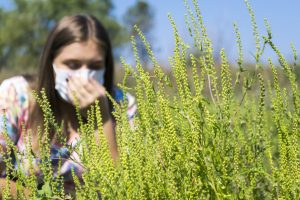
Manage Symptoms
Checking local pollen counts is helpful to anticipate the level of exposure on any given day. Pollen counts are determined by collecting pollen on special rods. The pollen is then counted under a microscope and calculated in grains per cubic meter of air. Pollen counts tend to be the highest early in the day, or often when the wind picks up just before a large rainstorm. If you like dancing in the fall rain, or jumping in rain puddles, however, you are in luck. During a rainstorm and immediately following, pollen becomes still and dormant because the rain makes it damp and heavy. As the air becomes warmer and drier following the storm, however, the pollen count will rise again.
Pollen Avoidance
Those with weed pollen allergies should try to avoid heavily dense wooded areas or those with brush and shrubbery. These areas should be especially avoided in late August when pollen is the most dense and abundant. Pollen counts are never zero, nor will an allergy sufferer truly be able to avoid weed pollen in the late summer and early fall. However, contact may be lessened by taking simple steps to avoid pollen overload:
- Utilizing the air conditioner or heater
- Keeping the windows and doors at home and in the car closed
- Utilizing the dryer rather than the fresh breeze to dry clothing
- Changing clothes after coming in from being outdoors
- Shower prior to getting into bed or laying on upholstered furniture
These easy steps will help to decrease pollen exposures. Also, one benefit COVID-19 may bring allergy sufferers, is that wearing of some masks will help to minimize the amount of pollen reaching the nasal passages if being worn in outdoor settings.
Get Tested
If someone is unsure whether weed pollen is a trigger for their back-to-school nasal congestion, runny nose, post nasal drip, sneezing, and itchy watery eyes, taking an allergy quiz or seeing their provider for an allergy test may provide the clarity they are looking for!
Amanda Hofmann, MPAS, PA-C, is a graduate of Duquesne University, in Pittsburgh, Pennsylvania. After spending eight years in clinical practice, she joined United Allergy Services as the vice president of clinical. Amanda is also the past president of the Association of PAs in Allergy, Asthma, and Immunology.
United Allergy Services is also on Facebook, LinkedIn, or Twitter. See other interesting and related articles on the UAS Blog.
Back to School Action Plan for Allergies and Asthma
As the final days of summer break come to a close, families everywhere are preparing for children to return to school. Whether this is the first year a child is heading to school or the last, it is an exciting time for both children and parents. It can, however, also be a time of anxiety for a parent worried about a child’s asthma or allergy conditions. Below are some ways to prepare and communicate these concerns, and back to school excitement.
Make a Plan
Schedule an appointment with your child’s healthcare provider in the weeks leading up to the first day of school. During this appointment, discuss overall heath as well as specifics regarding allergies, food allergies, or asthma. This is also a great opportunity to request that the healthcare provider refill any asthma or allergy medications. The provider can complete medication permission forms required by the school nurse during your visit. It is important the school nurse can quickly and easily confirm the medication you provide is:
- non-expired
- prescribed for your child
- has clear directions on when, how, and how much to take
This is also the time to request your provider complete any additional forms required by the school. Examples are asthma action plans, anaphylaxis action plans, and food allergy alert plans with avoidance and substitution information. If your child is in their first year or is entering a new school, it is important to contact the school nurse directly. Also, if your child has complex requirements or action plans, you should visit with the school nurse yearly about their daily requirements. The nurse can discuss accommodation options available for children at the school. Other important policies to discuss include asthma inhalers, epinephrine auto injectors, classroom parties, field trips, and cafeteria rules.
Classroom Action

The classroom can be a source of exposure for children with allergies to dust mites, mold, and animal dander. Communicate with your child’s teacher about allergy triggers for their symptoms and what common symptoms to look out for. Don’t forget to ask if the classroom will have a resident pet. If so, what type of animal and any requirements that the pet come home with your child may be important. It is also important to understand if the school has air conditioning or if windows are typically opened on nicer days. If windows must be opened, then you can prepare your child accordingly with additional symptom control medication.
During your initial meeting with the teacher, you can begin setting appropriate expectations. Discuss things such as asthma action plans and any potential limitations for recess or physical education. Also, anaphylaxis action plans for food or stinging insects and any food avoidance requirements should be covered. You will feel confident knowing both the school nurse and teacher are fully informed of your child’s needs. The school nurse and teacher should have a consistent plan for where inhalers and epinephrine auto injectors are stored. Also confirm that there is a plan for administration of medication in a time of need. It is a good idea to ask about substitutes or classroom aides/parent volunteers confirm they are made aware of your child’s needs.
When to Stay Home
During a regular year it is often a challenge to decide when it is or is not appropriate to send a child to school with cold-like symptoms. That can be even more complex for a parent if your child has allergies or asthma. In this unique time when COVID-19 is still a major focus, another layer of complexity is added.
For children with asthma, it is safe to attend school with mild wheezing that occurs infrequently and is quickly resolving with the use of albuterol. However, it is appropriate to keep your child home from school if:
- they experience difficulty sleeping due to respiratory symptoms
- require albuterol every 4 hours to relieve them of things like wheezing, shortness of breath, or chest tightness
- have respiratory symptoms that are failing to resolve with albuterol use
Make sure to always inform the school nurse and the child’s teacher of any recent asthma exacerbations and how it was treated. Communicate any continued treatment if applicable.
If your child has an allergic reaction, make sure to inform the nurse. Also update the nurse on the allergen trigger if known, how the reaction was treated, and any ongoing treatment.
Wishing all the children a safe, healthy, and prosperous new school year!
Amanda Hofmann, MPAS, PA-C, is a graduate of Duquesne University, in Pittsburgh, Pennsylvania. After spending eight years in clinical practice, she joined United Allergy Services as the vice president of clinical. Amanda is also the past president of the Association of PAs in Allergy, Asthma, and Immunology.
United Allergy Services is also on Facebook, LinkedIn, or Twitter. See other interesting and related articles on the UAS Blog.
Stinging Insects & Allergic Reactions
As summer continues marching on, the calendar surely includes upcoming cook-outs, boating on the lake or just a few hours playing in the backyard. The warmer temperatures and longer days present increased opportunities for visits for not so welcome winged visitors. While stinging insects may only be a minor annoyance to some, for others they can lead to serious, life-threatening allergic reactions. Unfortunately, anaphylaxis resulting from insect stings takes 100 lives each year.
Bees, wasps, multiple species of hornets, yellow-jackets and fire ants are the most common stinging insects that cause an allergic reaction. When these insects sting you, they inject a toxic substance called venom. Commonly, when someone is stung or bitten by these insects, they will experience symptoms such as pain, redness, itching and minor swelling in the area around the bite or sting. This is a normal and expected response. These symptoms will typically improve on their own within hours or days.
If a common mild, localized reaction does occur, there are some steps that should be taken at home. Rarely does any medical intervention need to occur at a provider’s office or emergency facility. It is important to quickly removing the stinger if it has been left in the skin. Following, it is important to gently wash the area with soap and water to prevent secondary infections, and a cold compress can reduce swelling and pain. Topical steroid ointments or oral antihistamines can assist in itch relief.
In others, however, the sting or bite and correlating venom can trigger a life-threatening allergic reaction. This life-threatening reaction, or anaphylaxis, requires immediate intervention and medical attention. Anaphylaxis may present with skin rashes such as hives, widespread itching, swelling on the body, or swelling of the mouth, lips, tongue, and/or throat. It can also include difficulty breathing or wheezing, dizziness, loss of consciousness, stomach cramping, vomiting, diarrhea, or weakness. Signs that anaphylaxis may be rapidly worsening or progressing in a serious way include a such drop in blood pressure, or a sense of impending doom. Without immediate treatment, anaphylaxis can result in death
If you or a loved one has a known allergy to a stinging or biting insect, or the symptoms of anaphylaxis described above occur shortly after a bite or sting, it is important to seek medical care immediately. Likely one or more dose of epinephrine will be required, along with additional aid in the way of antihistamines, albuterol, oxygen, intravenous fluids, and corticosteroids. It is crucial that with a known allergy to stinging insects, a person carries at least two doses of injectable epinephrine and can access them within 60 seconds of exposure. Anytime epinephrine is used, a follow up visit to the nearest emergency department is required.
When spending much anticipated time outdoors this summer, thought into what you might wear actually can be protective. Avoid clothing that will make you look or and sprays that make you smell like a flower when spending time outdoors. There is some data showing that wearing khaki and gray colored clothing and abstaining from perfumes or other scented personal use items do minimize the risk of being stung or bitten when insects are unprovoked. Also, use caution and refrain from being barefoot in and around areas where stinging insects may be living. This includes grass, nests that are in the ground, or nests found in trees, bushes, or on buildings. When landscaping, remove old tree stumps, fallen trees, or piles of debris that stinging insects could nest in. It is also beneficial to limit the amount of flowers and other colorful landscaping that attract insects, especially near areas where people may be present. It is important to refrain from leaving open beverage or food containers outdoors, and make sure garbage cans are also properly covered. If a canned beverage has been left unattended for some time, consider throwing it away as there is a risk a stinging or biting insect is not within the sugary liquid. Finally, in the spring season, before the majority of the unwanted winged friends are among us, check home door and window screens and make any necessary repairs.
If a stinging insect is flying around you or has landed on you, although it may be difficult, it is important to remain calm. Trying to squash or swat at an insect may cause it to sting or bite. Keeping the windows rolled up when driving will further help reduces unwanted meet and greets as well. However, if a stinging or biting insect does enter a vehicle, stop the car slowly, and open all windows.
Summer Allergy Travel Tips
School is out, summer is in full swing, and it is prime time for summer vacations and traveling. Summer travel with environmental allergies, asthma, or food allergies may make planning a vacation seem like a daunting task. Not to worry! We can show how to keep summer allergy issues at bay during your staycation, beach trip or wine tour of your dreams.
Summer can be an ideal time to travel. The hot summer months can actually provide relief to some, like those with tree pollen allergies. Unfortunately for others, summer comes with its own allergy triggers. While tree pollen counts tend to be lower, the summer heat pushes grass and mold pollen to be higher. Ragweed begins to appear in the late summer and early fall months to kick off fall allergies. Pollen is not the only trigger you can expect; more stinging insects and hotter temperatures in summer months can complicate matters for asthma sufferers.
Summer Allergy Location Tips
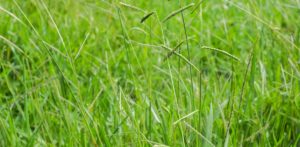
Location is everything! One consideration is that pollen counts tend to be lower on the coast, so beaches may be a good option. The desert, or alternatively snowy mountain tops, can also be ideal for pollen, although maybe not for summer travel. Does your vacation involve hiking or mountain climbing? Dust mites do not prefer elevations above 2,500 feet, so that may be a great choice as well. Wherever you decide to go check the allergen forecasts for that area. You should also check current pollen counts each day there. If high pollen counts are in the forecast, consider planning inside activities during your trip.
Checking pollen counts may not be the only forecast to make sure to monitor. As the temperatures rise, you can expect the humidity to rise as well. Many who suffer from asthma can find their condition aggravated by the high temperatures and humid climate. When planning your time outside during the summer, check the air quality for low humidity and low ozone days. You can also avoid triggers by planning around the heat of the day when possible.
Packing for Vacation
Although your favorite swimsuit may be more fun, allergy control measures should equally be at the highest priority. Staying compliant to your recommended treatment protocol in the days before you leave is crucial. These measures will support well-maintained symptoms while traveling, and for the duration of the trip.
- Make sure to pack allergy medication and immunotherapy in a carry-on bag if traveling by plane.
- Try to keep medications in original packaging and pack all medication and allergen immunotherapy in a separate, clear bag.
- Any liquid or gel medications or immunotherapy will need to individually be 3-4 ounces or smaller. Consider purchasing travel sizes if standard sizes do not meet this requirement.
- Pack 1-2 days of additional medication or immunotherapy than what will be needed in case of delay when traveling.
- It may be beneficial to set a reoccurring alarm on a phone before leaving. Normal routines may change with travel and vacation plans.
- Finally, are you traveling out of the country? If you are traveling to a non-English speaking location, bring a list of your allergies in the native language. You may also learn to say or write “I’m allergic to _____.” in the local language.
Additionally, do not forget to pack any hypoallergenic hygiene products that you regularly use. Examples might be sunscreen, after sun cream, lotions, ointments, body wash, or laundry detergent. When searching for accommodations, remember that more and more hotels offer items like mattress and pillow covers or hypoallergenic linens so you may not have to pack your own. It may also be helpful to ask about smoke free rooms, away from humid, mold friendly pool areas if possible. If pet dander is a concern, take note of whether the location is “pet friendly”.
Summer Allergy Avoidance Tips
Air in enclosed spaces such as planes and trains can sometimes be extremely dry. Consider investing in nasal saline spray or washes, as well as portable humidifier. A humidifier will likely also be beneficial if staying in a hotel for more than a night or two. Staying well hydrated with water and non-caffeinated beverages will also greatly help you combat drying out. If traveling by car, considering utilizing the heat or air conditioning and keeping windows closed. Also, turning on the heat or air 10 minutes before departure can help clear vents of any residual allergen particles.
While enjoying your destination, remember that peak pollen times are typically early in the day (specifically 5am 10am). Scheduling desired outdoor activities for later in the day or just before dusk may help to reduce exposures. Similarly to when you are home, a daily shower is helpful for allergen avoidance. Showering before bed will help to wash away allergens that have adhered themselves to your skin or hair. This is especially important to maintain so that your pillow, sheets, and the immediate space you breathe in all night is allergen free.
Insect Allergies
Another aspect of the summer allergy concerns may be insects. If stinging insect allergies are present planning ahead can alleviate a lot of anxiety and allow for a smooth trip. Always make sure to carry a minimum of two epinephrine auto injectors if it has been prescribed to you or a loved one. Make sure the epinephrine autoinjector is carried in a way it can be accessed and administered within 60 seconds of a need arising.
If you or a loved one does have life threatening allergies, it is a good idea to check with your health insurance and ensure you know where to seek medical care should the need arise while you are out of town. You may also consider carrying an allergy identification card. It can be helpful to keep a card in your wallet listing your allergies, and also emergency contact information and your healthcare provider information. This can be especially important for children who may be summer camps or staying overnight with friends or family.
Food Allergies
If food allergies are present, packing your own meals or snacks may make traveling easier. Preparing food yourself is always the safest option. Alternatively, research the local dining hot spots you wish to visit in advance of leaving for your trip. This allows you to identify safe selections from the menu or you can call to request proper menu accommodations. You may still consider packing your own snacks if you have food allergies. While it may be possible to plan meals around food allergies, snacks often present more of a challenge. Pack allergy friendly snacks, especially if lengthy plane rides are involved.
Amanda Hofmann, MPAS, PA-C, is a graduate of Duquesne University, in Pittsburgh, Pennsylvania. After spending eight years in clinical practice, she joined United Allergy Services as the vice president of clinical. Amanda is also the past president of the Association of PAs in Allergy, Asthma, and Immunology.
United Allergy Services is also on Facebook, LinkedIn, or Twitter. See other interesting and related articles on the UAS Blog.
Grass Pollen Allergy: Making the Most of Summer
Summer is finally here! Longer days, days spent by the beach or the pool, and late nights catching fireflies are on the horizon. Allergies are usually associated with the spring or fall because pollen is most active during these times. However, summer allergies, especially to grass, are also common. This grass pollen allergy can cause some of the same troublesome allergy symptoms as in other seasons.
Allergy Season
Grass begins to pollinate in the late spring, typically April or May in the northern part of the country. The pollination period in the north will then typically continue through June or July. However, in southern regions, grasses may pollinate throughout many seasons and could trigger symptoms throughout the year. These pollination time periods are when those who suffer from a grass pollen allergy notice their symptoms at their worst.
Types of Grass Pollen
There are hundreds of different kinds of grasses throughout the United States. Fortunately, not all of them are the source of summer sneezing, congestion, and itchy eyes. Some grass pollen types are small, light, dry and can travel for hundreds of miles by the wind. One group of grasses, referred to as the northern pasture grasses, cause more allergy problems than any others. These grasses include:
- common timothy grass
- sweet vernal grass
- orchard grass
- perennial rye grass
- Kentucky bluegrass
Another type of grass, bermuda, is a southern grass and is responsible for many troubling summer grass allergy symptoms. Johnson grass is another main culprit for grass pollen misery.
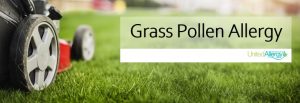
Options for Homeowners
While common Bermuda grass usually triggers allergies, some hybridized versions produce little to no pollen. One common type of hybrid Bermuda grass referred to as the "Princess 77" variety is available for homeowners. Other good hybrid Bermuda grass varieties include "Tifway" and "Santa Ana". Buffalo grass may be a good warmer climate option. This warm-season grass survives droughts and requires little supplemental watering, making it ideal for areas with watering restrictions. Types like the "UC Verde" or "609" produces only female plants, eliminating the problems of flowering and producing pollen. Although less commonly found, this is ideal for grass pollen sufferers.
Measuring Grass Pollen Counts
Those that suffer from a grass pollen allergy can benefit from checking their local pollen counts regularly. Pollen counts are determined collecting pollen on special rods. The pollen is then counted under a microscope. The pollen count is then calculated in grains per cubic meter of air. Pollen counts tend to be the highest early in the day, or often when the wind picks up just before a large rainstorm.
If you like dancing in the rain, or jumping in rain puddles, however, you are in luck. During a rainstorm and immediately following, pollen becomes still and dormant due to the rain making it damp and heavy. As the air becomes warm and dry following the storm, the pollen count will become potent again
Manage Your Grass Pollen Allergy
Pollen counts are never zero, nor will an allergy sufferer truly be able to avoid grass pollen in the summer. However, some practices may help decrease pollen exposures. For instance, utilizing the air conditioner while keeping the windows and doors to the home and car closed. Also, utilizing the dryer rather than the fresh breeze to dry clothing will help to decrease pollen exposures. It is especially important to keep windows closed when you or someone close mowing their grass.
Although it may seem like a good idea to avoid cutting the grass as much as possible, mowing grass often and keeping grass short actually causes the grass to release less pollen into the air. If a nonallergic friend or family member isn’t available to assist in cutting your grass, consider wearing a mask. Wearing masks will help to minimize the amount of pollen reaching the nasal passages. It is greatly beneficial for grass pollen sufferers to wear a mask when cutting grass or doing other yardwork.
Other Helpful Tips
Those with a grass pollen allergy should try to avoid heavily dense grassy areas, especially in early summer when pollen is the most dense and abundant. Although summer brings warmer temperatures. when you are out working in the yard, out at a park, or hiking it is recommended to wear long pants or long sleeve shirts in a light breathable fabric. This added layer of protection helps reduce the amount of pollen that comes in direct contact with your skin. Similarly, wearing sunglasses and hats also reduce pollen that contacts eyes or nestles in your hair.
Grass pollen allergy sufferers should also make a habit of changing their clothes after coming in from being outdoors, and bathing prior to getting into bed/laying on upholstered furniture. Wash bedding in very hot, sanitizing cycles once a week in peak pollen seasons. It is also beneficial to remove shoes before entering your home. And do not forget your pets! They can be major sources of tracking grass pollen into your home. Make sure to wipes them down with a wet cloth or towel before they enter your home, and make sure to bathe them more frequently in high pollen seasons. And although not always feasible, the ability to keep your pets from sleeping in your bed, in your bedroom, or on your upholstered furniture will also greatly benefit you if you suffer from grass pollen.
Symptom Relief is an Option
If someone is unsure whether grass pollen is a trigger for their troublesome nasal congestion, runny nose, postnasal drip, sneezing, and itchy watery eyes (take our allergy quiz here), seeing their provider for an allergy test may provide the clarity they are looking for!
Amanda Hofmann, MPAS, PA-C, is a graduate of Duquesne University, in Pittsburgh, Pennsylvania. After spending eight years in clinical practice, she joined United Allergy Services as the vice president of clinical. Amanda is also the past president of the Association of PAs in Allergy, Asthma, and Immunology.
United Allergy Services is also on Facebook, LinkedIn, or Twitter. See other interesting and related articles on the UAS Blog.
Independence from Summer Allergies
The Fourth of July is only one week away and that likely means many are making or finalizing plans to be outside. Are you planning to be the grill master? How about the fireworks expert? Maybe you are the ultimate host of the celebration surrounded by family and friends enjoying fireworks, picnics, swimming, and outdoor activities. Here are some of the most common summer allergy tips to for attending Fourth of July celebrations. After all, it is your right to have independence from summer allergies!
Number One Summer Allergy: Grass Pollen
During the summer months, many allergy sufferers are wary of grass pollen. They are the most common seasonal allergy triggers and are heaviest in May through August. Those that suffer from grass pollen allergies can benefit from checking their local pollen counts daily. Pollen counts tend to be the highest early in the day or as the wind picks up just before a large rainstorm.
Also, try to offer guests an indoor option during your outdoor celebration if possible. Try to offer a portion of the area where guests can sit away from tall/dense grass or shrubbery. Another options would be a non-grass surface like a deck or patio. To avoid bringing those pollens inside after a great celebration, take a shower or bath before hopping into bed. This will help rinse off any sticky allergens stuck to your body or hair before they stick to your bedding.
Summer Skin Allergy: Sunscreen Reactions
Many celebrations occur outside or around the pool, so sunscreen is important to discuss. While sunscreen is a crucial part of summer safety, sometimes it can cause a reaction much worse than a sunburn. A contact allergy to the sunscreen may present as a rash appearing where it was applied. Or it could be a reaction that appears after applying the sunblock and being exposed to the sun.
To avoid a sunscreen reaction, apply a quick and simple patch test before applying the product to your whole body. Decide on a small area, like the wrist, and apply the product. Wait at least 24 hours to make sure the skin does not react.
Summer Venom Allergy: Stinging Insects
Similar to sharing the festive star-spangled celebrations with pollen and sun, consider insects as well. We know stinging insects such as bees, wasps, hornets, and yellowjackets are most active during summer and early fall. Also, fire ants are active all year round in many southern parts of the United States.
For many of us stings and bites can be uncomfortable and painful. However, there are many picnic guests that have life-threatening reactions that can result from a sting or bite. People who know they are at risk should always carry two doses of auto injectable epinephrine. They should have the ability to access it within 60 seconds if necessary. Try to avoid the stings and bites before they occur by refraining from walking outdoors barefoot, especially in grassy areas. Another helpful trick is to skip perfume or sweet-smelling body sprays or lotions. Also, drinking from cans or bottles that have sat open and unattended should be avoided because sometimes insects can be an unpleasant surprise. Finally, when choosing the perfect outfit for the holiday weekend, leave your vivid, floral clothes in the closest.
Summer Asthma Concerns
When we think of the Fourth of July, firework displays lighting up the sky quickly come to mind. Fireworks, although beautiful and breathtaking, can create smoke and small particulate matter. This can trigger asthma for some, taking their breath away in a not so enjoyable way. If you suffer from asthma, consider watching the fireworks from an indoor location. Similar to fireworks, smoke from grills, bonfires, firepits, or outdoor fireplaces can also trigger asthma for some. Try to avoid the direct smoke pathway and leave significant distance between yourself and the source of the smoke.
Other scented products utilized during outdoor gatherings can also contribute to air pollution and can also trigger asthma. If hosting a party, it would be helpful to contact your guests and ask if certain things like scented insect repelling candles, scented tiki torch oil, odor hiding fragrances or air fresheners trigger any negative responses for them.
If there is a swimming pool, remember that while chlorine isn't an allergen, it is an irritant and can cause problems with eye and nose itching. It can also cause breathing problems in people with asthma. If undesired symptoms are occurring while swimming, jump out, take off your suit and washing the affected area with clean water and soap to remove traces of the remaining irritant. You should have a rescue inhaler on hand, if prescribed to you, to calm any respiratory symptoms should they occur.
Summer Food Allergy Considerations
Finally, what would a summer celebration be without all the tasty food and drinks? If food allergies are present, it can make attending picnics and barbeques easier to pack your own meals or snacks to have readily available. Preparing food, yourself is always the safest option, however, it may not be feasible may not allow you to feel you are enjoying all the perks of a summer celebration. It is helpful as a host to ask about any food allergies or dietary restrictions when inviting guests to the event. It is also very helpful to label what individual dishes or offers are and include a high-level recipe or ingredient list. That way guests can privately identify safe selections off the menu in and will allow them to enjoy immersing themselves in the full experience without the worry of unknown exposure.
Amanda Hofmann, MPAS, PA-C, is a graduate of Duquesne University, in Pittsburgh, Pennsylvania. After spending eight years in clinical practice, she joined United Allergy Services as the vice president of clinical. Amanda is also the past president of the Association of PAs in Allergy, Asthma, and Immunology.
United Allergy Services is also on Facebook, LinkedIn, or Twitter. See other interesting and related articles on the UAS Blog.
Easter with Allergies
The Easter and Passover holidays are here! Holidays mean family centered fun, festive meals, and usually sweet treats to enjoy. For allergy suffers, however, they can sometimes be challenging to navigate. Aside from the usual pollen and food allergies, brightly dyed eggs, household pets, and sweet baby chicks and bunnies can also wreak havoc on the nose and chest. Here are some tips to navigate the upcoming holidays and ensure that you and your family celebrate safe and happy.
Easter and Food Allergy Considerations
Traditional holiday meals are at the cornerstone of Easter and Passover. Plan the meals out in advance and be mindful of any guests that may have a food allergy. Be flexible and try to switch ingredients for allergy-friendly alternatives, eliminate a recipe from the menu altogether, or take care to prepare allergy-friendly dishes separately from the other meals. If you are not sure if guests have a food allergy, consider printing recipes out for each of the dishes and allow people to determine if it’s a safe food for them to indulge in. Also consider avoiding a buffet style offering, or separating allergen safe foods from allergen containing foods in two different areas or tables.
Sweet Treats
These spring holidays typically mean chocolate and sweet treats to younger members of the family, or those young at heart. Try to again consider those guest and family members that may have allergies to things like chocolate, so they are not left sitting on the sidelines. Allergy to chocolate itself, or the cacao bean, is incredibly rare, however more commonly the offenders are milk, peanuts, tree nuts, soy, and corn. A little research will provide an array of options of dairy free or peanut/tree nut free brands of treats. Always check labels to see if the offending food in contained in the ingredients list, or mentions it was produced in a facility that also processes other allergen containing foods putting your loved one at risk of cross contamination.
Keep in mind most chocolate does contain soy in the form of soy lecithin to keep it solid at room temperature, and white chocolate commonly contains corn in the form of corn syrup. If the treats offered are of the homemade variety, it can be even more challenging for a food allergy sufferer due to lack of label to research ingredients.
If you suffer from food allergies, a good rule to follow if “If you can’t read it, don’t eat it”. Plan to bring some of your own safe snack or goodies, unless you can make sure your host prepared foods allergen free, safely away from other allergen containing food, and on a separate and thoroughly cleaned surface. In lieu of store bought or homemade edible treats, consider offering nonfood items for younger guests such as books, sporting goods, stickers, novelty items, or toys.
Easter Egg Related Allergies
Although the majority of food allergens are most offensive if ingested, it is important to consider that some people do have reactions or develop irritations from contact exposure to egg or the dyes used to make them bold and bright. If colorful dyed egg hunts are part of your spring holiday tradition, there are alternative ways to include everyone on the fun. Instead of using traditional eggs and egg dye, consider eggs made of wood, ceramic, or plastic, and consider natural dye alternatives. Other options include making gelatin eggs, egg sugar cookies for decorating, or decorating marshmallows in place of eggs. Also, consider replacing the hard-boiled egg on the Passover Seder plate with a ceramic or plastic egg to keep guests anxiety free.
If the above-mentioned allergies are life threatening for you or a loved one, always make sure to carry a minimum of two epinephrine auto injectors if it is prescribed. Make sure the epinephrine autoinjector is carried in a way it can be accessed and administered within 60 seconds of a need arising. If you or a loved one does have life threatening allergies, it is always a good idea to check with your health insurance and ensure you know where to seek medical care should the need arise if celebrating the Spring holidays out of town.
Pollen Considerations
Food allergens typically are the easiest to keep front of mind during the holidays, however equally as difficult for allergy suffers and arguably more difficult to avoid are the tree pollens and mold spores blowing in the air. These unwanted guests can ruin any picnic or outdoor gathering with nasal, sinus, eye, and chest symptoms. If there is both indoor and outdoor venues at the celebration location, try to minimize the time spent outdoors. If you are hosting the celebration, try to offer an indoor haven if planning to spend time outdoors, as well as keep windows and doors closed at the indoor space. Also, minimize the exposure to outdoor allergens while traveling to the destination by keeping windows up in the car and instead using the air conditioning.
Celebration Times
It is a good habit to always check pollen counts for the area where you will be celebrating. If you are planning the celebration, try to have it start mid-day or later due to peak pollen times typically occurring in the first half of the day (specifically 5am 10am). Also, it would be beneficial to plan the event outside of heavily grassy areas or those densely populated with trees. This may help to decrease the concentration of allergens in the air. If the celebration will be entirely outdoors with no indoor refuge, it is a good idea to make sure you are on top of your allergy medication or immunotherapy regimen before going. It may be wise to pack a few changes of clothing as well as wet wipes for the ability to remove pollen from your immediate environment every few hours.
Once you return home from the festivities, plan to shower or bathe before prioritizing any other activities. It is especially important to bathe before crawling into bed, to remove any allergens that have adhered themselves to your skin or hair. This is especially important before allowing them to have access to your pillow or sheets and being in the immediate space and air you breath in all night.
Easter and Passover Gifts or Decor
Many people choose to show their appreciation to their host or show their love to their family by bringing beautiful spring flowers or plants to the celebration. Unfortunately, people can have severe symptoms such as sneezing, along with nose and eye itching and watering related to the pollen, or just the smell of particular flowers. Even an asthma attack can be triggered from them. According to the American College of Allergy, Asthma and Immunology, there are many flowers you can get at a florist that produce little pollen. Look for tulips, roses, begonia, columbine, crocus, daffodil, and geraniums if you want to be safe.
Pet Allergies
We cannot forget about the cherished furry family members that may be in attendance for the spring holiday celebration. There may also be the propensity to give the give of baby chicks or bunnies this time of year. Dander, saliva, sweat, and urine from adorable dogs, cats, and even bunnies can trigger an allergic response in some people. If possible, try to keep pets confirmed to only a certain area of the celebration so that those that wish to enjoy them can, while those that are unable can find refuge elsewhere.
Make sure to thoroughly wash your hands before returning to an animal free area of the celebration, before partaking in shared food items, or before touching your face, mouth, or eyes. Also, make sure the recipient of a new spring pet is not triggered by them. Although recent literature has shown us a true allergy to bird feathers is rare, there are substantial amounts of dust mites found in feathers that can trigger unwanted allergy symptoms.
Allergy Treatment Options
If you or a loved are unsure whether tree pollen, grass pollen, mold spores, dust mites, or animal dander are potential allergy triggers and the cause of the nasal congestion, runny nose, post nasal drip, sneezing, and itchy watery eyes you have been suffering with, seeing your provider for an allergy test may provide the clarity they are looking for! Some providers may have the ability to access food concerns as well. And if you are already aware of true allergy triggers, but the spring allergy medication and avoidance measures are just not cutting it, there is still time to see your provider and discuss starting allergen immunotherapy.
Amanda Hofmann, MPAS, PA-C, is a graduate of Duquesne University, in Pittsburgh, Pennsylvania. After spending eight years in clinical practice, she joined United Allergy Services as the vice president of clinical. Amanda is also the past president of the Association of PAs in Allergy, Asthma, and Immunology.
United Allergy Services is also on Facebook, LinkedIn, or Twitter. See other interesting and related articles on the UAS Blog.
Tips for Balancing Baseball and Allergies
Spring means longer days, warmer weather, and the beginnings of baseball! Unfortunately for some allergy sufferers, the start of the long-anticipated baseball season also means the time of year when allergens such as tree pollen are at an all-time high. Sneezing, wheezing, and itchy, watery eyes can make games or practice challenging for you or your little leaguer. Even more concerning? The thought of major league games and contact with baseball’s favorite sidekick...peanuts! You can still enjoy this spring and baseball season with a little planning for your allergies.
Eliminating all outdoor sports and activities may seem like the best decision, and for many, it is. However, if skipping out on baseball or other outdoor sports due to allergies just is not an option, we can help. Here are some tips that will help allergy suffers enjoy watching America’s pastime and PLAY BALL!
Airborne Allergy Tips
Check the weather forecast before heading to the game. When checking out the weather, it is good practice to also check the pollen counts in the area. Keep in mind that peak pollen times are typically in the first half of the day, specifically 5am 10am. Attending practices or games midday or in the afternoon may help to reduce exposures.
Baseball and outdoor allergies don't have to be in competition with one another. If you have a little leaguer, packing wet wipes is good practice. Wiping down their hands, face and neck can be helpful to combat those distracting allergy symptoms when out on the diamond. Also, make sure your favorite player is not relying on allergy medication that could make them drowsy. There are non-sedating medication options, or allergen immunotherapy that are worth discussing with their provider.
After a long practice or game, it is beneficial to change your clothing as soon as possible. Also helpful is an immediate shower, especially before crawling into bed. The shower will help to wash away any allergens that have adhered themselves to your skin or hair. This is especially important so that the allergens aren't transferred to your pillow or sheets, remaining in the immediate space you breathe in all night.
Planning for Stinging Insects and Food Allergies
If your allergies include stinging insects or even food, planning ahead can alleviate a lot of anxiety. Always make sure to carry a minimum of two epinephrine auto injectors if there is a known insect or food allergy. Make sure the epinephrine auto injectors can be accessed and administered within 60 seconds if the need arises.
If food allergies are present, especially peanut, legume, or tree nut, it can make the lyrics “Buy me some peanuts and Cracker Jacks” send shivers down your spine. Fortunately, most large baseball stadiums across the country have become aware of the dangers and distress surrounding food allergies and have started to offer peanut-free games or special accommodations for food allergy families with peanut-free designated seating. The Food Allergy Research and Education (FARE) organization typically releases an annual guide outlining which major league and minor league baseball stadiums offer peanut aware sporting events. Along with utilizing their helpful guide, FARE recommends “to reach out directly to the venue to learn more about their efforts”.
Some suggested questions to have ready when you contact the venue about are:
- Are there any [peanut] allergy friendly games, sections, or suites available?
- Does the venue utilize power washing for seating, and traffic pathways at the stadium?
- Can you find ingredient lists or are they available upon request at the concessions?
- Do they allow families to bring in their own safe meals and snacks?
- Are emergency responders available to the public at every game, and are their sections closer to these personnel?
Planning and communication are key to enjoying baseball season and balancing your outdoor allergies. Talk to family, friends, coaches, players, and venues, to create a plan that is right for your family. However, missing out on baseball season does not have to be part of that plan. If you or your loved ones are not quite sure if allergies are playing a role, or if the over-the-counter allergy medication just is not cutting it, you have options. There is still time to see your provider and discuss allergy testing and begin allergen immunotherapy.
About the Author
Amanda Hofmann, MPAS, PA-C, is a graduate of Duquesne University, in Pittsburgh, Pennsylvania. After spending eight years in clinical practice, she joined United Allergy Services as the vice president of clinical. Amanda is also the past president of the Association of PAs in Allergy, Asthma, and Immunology.
United Allergy Services is also on Facebook, LinkedIn, or Twitter. See other interesting and related articles on the UAS Blog.
Tips for Traveling with Allergies
Summer is here, and for many families that means a much anticipated vacation! A time for overdue rest and relaxation, or maybe some quality time spent away with children and loved ones. While fun can be had at its best during this time, allergies can be at their worst, leaving sufferers to fear their upcoming travel plans. Here are some tips for maximizing enjoyment during travel for allergy sufferers.
Preparing for your trip
Location is everything! Especially when it comes to allergen avoidance and whether the chosen destination will fuel or extinguish allergy symptoms. Keep in mind that pollen counts tend to be lower on the coast, so beaches or cruising can be ideal vacation ideas. The desert, or alternatively snowy mountain tops can also be ideal. Cold temperatures will keep pollen and mold counts low, and dust mites do not prefer elevations above 2,500 feet. Regardless of which destination is desired, it is ideal to check the current weather and allergen forecasts for that area prior to leaving.
What should you pack?
Although your favorite swimsuit, new strappy sandals, or warmest ski jacket may be top of mind when planning and packing, allergy control measures should equally be at the highest priority. Staying compliant with a recommended treatment protocol prior to departure is crucial, as well controlled allergies, asthma, or atopic dermatitis before departing will give the best opportunity for well-maintained symptoms while traveling and for the duration of the trip. Make sure to pack allergy medication and immunotherapy in a carry-on bag if traveling by plane. Try to keep medications in original packaging and pack all medication and allergen immunotherapy in a separate, clear bag. Any liquid or gel medications or immunotherapy will need to individually be 3-4 ounces or smaller, so consider purchasing travel sizes if standard sizes do not meet this requirement. It would be beneficial to pack 1-2 days of additional medication or immunotherapy than what will be needed in case of delay when traveling home. And it may be beneficial to set a reoccurring alarm on a phone before leaving, as it may be more difficult to remember to take medications and immunotherapy regularly while away having fun.
Aside from medications and/or immunotherapy, don’t forget to pack any hypoallergenic hygiene products regularly utilized such as lotions, ointments, creams, body wash, sunscreen, laundry detergent, and/or dust mite encasements for pillows. When searching for accommodations, please also be aware that more and more hotels are offering such things as mattress and pillow covers or hypoallergenic linens so you may not have to pack your own. It is also beneficial to make sure sleeping accommodations are smoke free, away from humid mold friendly pool areas, and are free of “pet friendly” labeling.
Other things to consider
When traveling to or from the destination, the air in enclosed spaces such as planes and trains can be extremely dry. Consider investing in nasal saline spray or washes, as well as portable humidifier. A humidifier will likely also be beneficial if staying in a hotel for more than a night or two. Staying well hydrated with water and non-caffeinated beverages will also greatly help you combat drying out. If traveling by car, considering utilizing the heat or air conditioning and keeping windows closed. Also, turning on the heat or air 10 minutes before departure can help clear vents of any residual allergen particles.
While enjoying your destination, keep in mind that peak pollen times are typically in the first half of the day (specifically 5am 10am), so scheduling desired outdoor activities for later in the day before dusk may help to reduce exposures. And similar to when you are at home, a daily shower, especially before crawling into bed, will help to wash away any allergens that have adhered themselves to your skin or hair and are hoping to enjoy your comfortable accommodations right alongside you. This is especially important before allowing them to have access to your pillow or sheets and being in the immediate space and air you breath in all night.
Tips for travel
Finally, if food allergies or stinging insect allergies are concerning companions, planning ahead can alleviate a lot of anxiety and allow for a smooth trip. Always make sure to carry a minimum of two epinephrine auto injectors if one is prescribed to you or a loved one. Make sure the epinephrine autoinjector is carried in a way it can be accessed and administered within 60 seconds of a need arising. If you or a loved one does have life threatening allergies , it is a good idea to check with your health insurance and ensure you know where to seek medical care should the need arise while you are out of town. Nothing makes returning home even more depressing than unforeseen medical bills.
If food allergies are present, it can make traveling easier to pack your own meals or snacks to have readily available in transit to or from your destination. Preparing food yourself is always the safest option, however, it may not be feasible if staying in a hotel, or may not allow you to feel you are enjoying all the perks of vacation and exploring a new place. Research the local favorites and dining hot spots you wish to visit in advance of leaving for your trip so that you can identify safe selections off the menu in advance or can call and speak with the chef or manager to make reservations and proper accommodations. This will allow you to enjoy immersing yourself in the food culture without the worry of unknown exposure or hassle of having to change restaurants after you have arrived to one.
Amanda Hofmann, MPAS, PA-C, is a graduate of Duquesne University, in Pittsburgh, Pennsylvania. After spending eight years in clinical practice, she joined United Allergy Services as the vice president of clinical. Amanda is also the past president of the Association of PAs in Allergy, Asthma, and Immunology.
United Allergy Services is also on Facebook, LinkedIn, or Twitter.
Tree Pollen Allergy
March is finally here, and that means so is Spring. Longer days, morning walks in the garden, rain showers and rainbows are excitedly on the horizon. However, if you have spring allergies you may be less excited about the season. Spring is typically defined as starting with the vernal equinox, and this year that is March 20. Of course, our allergies don't need a calendar to tell us that tree pollen, the main culprit of the sniffles and sneezes during spring allergy season, is already here!
Trees typically start producing pollen as early as January in the Southern areas of the U.S. The Northern and Central areas follow with pollen production sometime in February. One outlier, the Ashe Juniper Tree (commonly called Mountain Cedar) wreaks havoc in Oklahoma and Texas as early as December. Many trees will continue to produce pollen through June. Also, the milder the winter season, the earlier the trees begin producing pollen. Similarly, late winter or early spring snowfall leads to more pollen. The copious amounts of moisture produced when the snow melts allows a greater volume of pollen production.
Understanding Pollen
Pollen is a powdery substance made up of small spores that come from male trees and flowers. There are two primary types of pollen. The first pollen type, “Sticky Pollen” is produced by plants and trees that have bright and attractive flowers. This kind of pollen sticks to bees and is transported during flight, fertilizing other plants. These bright flowers are commonly thought to be spring allergy offenders. However, sticky pollen doesn't release much pollen into the air, so they are likely not driving most allergy symptoms.
The other type of pollen is “Wind-Blown Pollen”. This pollen comes from larger trees like pine and oak. The pollen is released in large quantities into the air, fertilizing other trees of the same species. The pollen that causes stereotypical allergy symptoms like nasal congestion, runny nose, and itchy eyes is usually the wind-blown pollen. This pollen is very small and light, and is easily spread by the wind for miles and miles.
Allergy sufferers can benefit from checking local pollen counts to determine the density of pollen in the air on any given day. Pollen counts are determined by collecting pollen on special rods. It is then counted under a microscope and calculated in grains per cubic meter of air. Pollen counts tend to be highest early in the day, or when wind picks up just before a large rainstorm. If you like dancing in the rain, however, you are in luck. During a rainstorm and immediately following, pollen becomes still and dormant due to the rain making it damp and heavy. As the air becomes warm and dry following the storm, the pollen count will become potent again.
Managing Tree Pollen Allergies
For tree pollen allergy sufferers, it is recommended to avoid densely wooded areas, especially in early spring when pollen is the most abundant. If possible, avoid planting trees around the house that can cause allergy symptoms. Pass on major tree offenders like oak, birch, maple, cedar, juniper, and eucalyptus (unless you can guarantee they are female trees). Instead, look for friendlier species such as dogwood, pear, plum, redbud, or crape myrtle.
Pollen counts are never zero, and allergy sufferers will not truly be able to avoid tree pollen in the spring. However, some practices may help alleviate the severity of symptoms. Try utilizing the air conditioner and keeping windows and doors closed at home and in the car. Also, using the dryer instead of hang drying clothing will help decrease pollen exposures. One benefit of COVID-19 is that wearing some masks will help to minimize the amount of pollen that reaches the nasal passages, especially when worn in outdoor settings. Tree pollen allergy suffers should also make a habit of changing their clothes after coming in from being outdoors, and bathing prior to getting into bed/laying on upholstered furniture.
If you know someone that has difficulty with morning walks in the garden and they are unsure whether tree pollen is a trigger for their spring nasal congestion, runny nose, post nasal drip, sneezing, and itchy watery eyes, you can suggest they see their provider for an allergy test. It may provide the clarity they are looking for!
Amanda Hofmann, MPAS, PA-C, is a graduate of Duquesne University, in Pittsburgh, Pennsylvania. After spending eight years in clinical practice, she joined United Allergy Services as the vice president of clinical. Amanda is also the past president of the Association of PAs in Allergy, Asthma, and Immunology.
For more interesting insight from United Allergy Services, visit us on Facebook, LinkedIn, or Twitter.
Skin Care Tips: Atopic Dermatitis & Eczema
From Amanda Hofmann, VP Clinical at United Allergy Services:
Earlier this month, the famous groundhog, “Punxsutawney Phil”, saw his shadow and promised 6 more weeks of winter. This past week, Phil showed he was serious about that promise as winter storms swept across most of the US. This recent wintry weather has given us the perfect opportunity to talk about proper skin care, especially if eczema or atopic dermatitis is present.
What is Eczema and Atopic Dermatitis?
Commonly, patients and even healthcare providers use the terms ‘eczema’ and ‘atopic dermatitis’ interchangeably. All atopic dermatitis is a form of eczema, however not all eczema is atopic dermatitis. Atopic dermatitis is the most common form of eczema and typically begins in childhood. This skin condition is typically characterized by dry, itchy skin and rashes that range from red/purple to brown/gray. Skin becomes dry, itchy, and inflamed due to immune system hyper-reactivity and the lack of a protective protein called filaggrin. A key factor in atopic dermatitis is a lack of this protein. Filaggrin allows our skin to produce and maintain a strong skin barrier. Without a strong skin barrier, moisture can quickly escape the skin and bacteria carried by fingernails can easily penetrate the skin after scratching.
Atopic dermatitis is commonly triggered by allergen exposure, stress, infection, or weather changes. Also, combining cold, dry air outside and dry indoor heat causes moisture to escape from the skins surface, leading to dry skin. Layering clothing, blankets, or taking lengthy hot baths or showers can lead to skin dehydration. All of these factors are more present in winter, making this time of year prime for suffering an atopic dermatitis outbreak.
Skin Care Tips: Eczema and Atopic Dermatitis Relief
Here are some helpful hints on how to help the skin survive and get some much-needed relief:
- Dress in soft, breathable clothing. Avoid itchy fabrics like wool that can further irritate the skin.
- Despite the persistent itch, try not to scratch or rub the skin. Scratching causes additional skin damage and irritation, as well as causes more heat on the surface of the skin. Skin damage, irritation and heat leads to more intense itching. By refusing to scratch, the itching cycle can be broken and the skin will be protected from virus and bacteria carried by fingernails.
- For relentless itching sensations, apply cool, damp cloths to affected areas to cool the skin down. Also useful are cold compresses, ice packs, or even that bag of frozen peas in the back of the freezer. Just make sure to always place a towel or barrier between very cold or frozen items and bare skin.
- Although hot showers and baths go hand in hand with winter weather, aim for lukewarm water bathing lasting for no more than 10 minutes.
- When bathing, skip the harsh washcloths and loofahs. Instead use your hands to lather up with a good cleanser. (A cleanser is different than soap or body washes. Soaps and body washes typically contain sodium lauryl sulfate which is a skin irritant, and are not as moisturizing or hydrating as a cleanser)
- Make sure cleansers, moisturizers, detergents, and skin hygiene products are fragrance free and dye free. (Look for the National Eczema Association Seal of Acceptance on products to guarantee they are free of fragrance, dyes and other common allergens.)
- After bathing, pat the skin dry rather than harshly rubbing.
- Replace moisture in the skin by applying a moisturizer immediately after taking a bath or shower. Aim for moisturizing to occur within the first 3 minutes.
- Moisturizers are classified as an ointment, cream, or lotion based on the amount of oil and water they contain. Higher oil content in a moisturizer is usually better for providing relief and even treating atopic dermatitis. Ointments have the highest oil content and are the best line of defense for atopic dermatitis.
- Try using a humidifier. Change the water in the humidifier and clean the machine every three days. Using distilled or demineralized water is recommended.
The National Eczema Association is a great resource for learning more about eczema, atopic dermatitis, causes, symptoms, and treatment options. There is a wealth of information on their website: https://nationaleczema.org/
Amanda Hofmann, MPAS, PA-C, is a graduate of Duquesne University, in Pittsburgh, Pennsylvania. After spending eight years in clinical practice, she joined United Allergy Services as the vice president of clinical. Amanda is also the past president of the Association of PAs in Allergy, Asthma, and Immunology.
For more interesting insight from United Allergy Services, visit us on Facebook, LinkedIn, or Twitter.
Are Hypoallergenic Pets a Real Thing?
Are you one of those people that think life without a furry friend is unimaginable? You aren’t alone. In fact, millions of dedicated pet owners even suffer through pet related allergy symptoms because life without a fur-baby isn't an option for them. In a growing trend, many steadfast animal lovers are turning to “hypoallergenic” pets in hopes of keeping the allergy symptoms at bay.
What Does Hypoallergenic Mean?
Pet allergies can display in many ways including sneezing, runny nose, coughing, chest tightness, shortness of breath and even allergy induced asthma. The term hypoallergenic is defined as “designed to reduce or minimize the possibility of an allergic response; as by containing relatively few or no potentially irritating substances.” Applying this term to personal care products such as lotions and detergents makes sense. However, applying this label to animals is a little more difficult.
Most often, people believe the pet’s fur and shedding causes the pet allergy. Typically, because of this belief, pets that are hairless, do not shed, or shed minimally are called hypoallergenic. However, the main trigger for pet allergy is in the protein produced by the pet, not their fur. These proteins are carried on small, easily inhalable particles with the highest concentration found in the pet dander. Pet dander is the dead flaky skin that all warm blooded mammals produce. Substantial amounts of protein are also found in the animal’s saliva and urine.
Are Hypoallergenic Pets a Real Thing?
Some breeds may cause fewer problems for allergy sufferers. Because of grooming habits or shedding patterns, allergen exposure can be less in these cases. Both dogs and cats have the potential, however, to release allergens into the air you breathe. The proteins are present in all breeds, including those that some claim to be hypoallergenic. Cats tend to cause more allergic reactions than dogs because they groom themselves more often. Unfortunately, birds, and smaller mammals such as guinea pigs, rabbits, hamsters, and chinchillas also produce dander. On the bright side, because these animals are much smaller and typically dwell in contained spaces, they may provide less allergen exposure and therefore less symptoms. Snakes, frogs, lizards, turtles, and fish do not have the dander issue. Reptile friends can be great options for allergy sufferers desiring pet companionship.
There are Options
Everyone is different, and every family is faced with different challenges when it comes to choosing the right pet. The most effective way to protect your household from pet allergens is not to have any warm-blooded pets. For millions of animal lovers, though, this is unlikely option. Researching animals that produce less dander, saliva, and are low/non shedders is a great start.
Although there is no amount of cleaning that will eliminate all dander from a home, there are some best practices. Cleaning your house and bathing your pets regularly is the first step. Also, keeping pets out of bedrooms, off carpets, and off upholstered furniture can help. The goal is to minimize the concentration of allergens and in crucial places such as family gathering rooms and sleeping areas.
Another option of course, besides the avoidance measures listed above, is to consider the benefit of allergen immunotherapy for anyone suffering a pet allergy.
Amanda Hofmann, MPAS, PA-C, is a graduate of Duquesne University, in Pittsburgh, Pennsylvania. After spending eight years in clinical practice, she joined United Allergy Services as the vice president of clinical. Amanda is also the past president of the Association of PAs in Allergy, Asthma, and Immunology.
For more interesting insight from United Allergy Services, visit us on Facebook, LinkedIn, or Twitter.
Valentine's Day Allergy Offenders
Valentine's Day can be intimidating for allergy suffers. Far too frequently sweethearts visit the emergency room instead of their favorite restaurant or fill the day with sneezes instead of smooches. Avoiding the most common Valentine’s Day allergy offenders is possible, and here are some tips to keep everyone safe.
The Nose Knows
Flowers on Valentine's Day is a classic way to show your love. Unfortunately, flower pollen can trigger severe symptoms such as sneezing, itchy nose, and itchy/watery eyes or even asthma attacks. Luckily for the lovers out there, according to the American College of Allergy, Asthma and Immunology, there are many flowers options that produce little pollen and still set the mood. Look for tulips, roses, begonia, columbine, crocus, daffodil and geraniums for your allergy suffering sweetheart.
Before we check the box for being safe in the scent department, consider other smell related concerns. It’s important to know physical symptoms such as headaches and sneezing can be triggered from just the smell of some flowers. Often, these symptoms can also be related to perfume or cologne as well. Although these reactions are not actually a true allergy, and instead are generally a reaction to odors created by volatile organic compounds, they can cause a Valentine's Day disaster.
Food Allergy Offenders
Also on the list of iconic Valentine’s Day allergy offenders is that delectable box of chocolates. Allergy to chocolate is rare, but most chocolate is made with milk, and many of the chocolate assortments contain tree nuts, peanuts, eggs, and other more common food allergens. Read all food labels to stay safe and be sure to take note of label warnings such as, “May contain” or “Processed in a facility”. If these warnings pertain to you, your Valentine’s Day may be sweeter without it.
If you or your Valentine have any food allergies, of course, be sure to carry your epinephrine autoinjector at all times. It’s always the most important accessory you can have! Here’s another helpful hint if food allergies are on the table; Protect your Valentine by calling ahead to that romantic restaurant to discuss the food allergy before you go. Make sure the kitchen and chef can be accommodating on a busy night like Valentine’s Day. Better yet, you might get extra points in the Cupid category if you roll up your sleeves and prepare all your Valentine’s favorites yourself. Added bonus? You won’t have to worry about finding the perfect facemask to match your outfit this year!
Gifts That Don't Keep Giving
If your Valentine has their heart set on jewelry, keep in mind that it can contain varying amounts of nickel. A contact allergy to nickel can lead to symptoms such as severe itching, blisters, and rash in the area where the jewelry touches the skin. Unlike allergy to flowers and foods, a reaction to a metal may take several days to develop after exposure. If baubles and jewels are the burning desire of your Valentine, however, don’t worry! Sticking to jewelry made with stainless steel, copper, platinum and 24 karat gold is usually a safe choice.
Finally, consider skipping the stuffed animals this year. The bigger the teddy bear, unfortunately, can mean the bigger the dust mite population that it ends up harboring. These mites are one of the most common causes of allergies and can be found in any fabric item. Much like pollen, they can bring on sneezing and other nasal symptoms, and even result in asthma flareups. Keep the temptation for the plush gifts away and make your Valentine your main squeeze instead!
See more news and insights from United Allergy Services on Facebook, LinkedIn, or Twitter.
'Tis the season for Cedar Fever
In parts of Texas and surrounding areas, cedar allergies are one last health challenge in an already difficult year.
2020 has been one for the ages, headlined by the widespread impact of the COVID pandemic. While Americans and the rest of the world await a vaccine, there are other concerns that can impact their health in the coming months. One of those is cedar allergies.
Winter is generally not considered a peak season for environmental allergies. Grasses pollenate in the summer months, ragweed pollenates in the fall, and most trees release their pollen in the spring months. However, one tree that does so between December and February is mountain cedar. According to Thermo Scientific, cedar is one of the primary allergens in Texas, especially around the Edwards Aquifer region. It can also be found in parts of southern Arkansas and Oklahoma.
Cedar is identifiable by its amber-colored pollen, which becomes ubiquitous from December through February. Its effect, often known locally as “cedar fever”, can lead to symptoms like itchy, stuffy, and runny nose, as well as sneezing and itchy and watery eyes for allergy sufferers. In more serious cases, it can lead to sinus infections or trigger allergic asthma symptoms.
In a climate where people are already hyper-conscious of their breathing symptoms, cedar allergies cause additional stress. Could that congestion and coughing be allergies, or something worse? Providers that offer allergy testing can not only offer their patients short-term peace of mind but a path to long-term relief from the symptoms that bother their patients, now and year-round.
While many allergy sufferers will practice a combination of avoidance and self-medication to get through cedar season, those are only short-term measures to combat the symptoms rather than the disease. Allergen immunotherapy represents a path to a long-term better quality of life, including during cedar season. With concerns such as the flu and COVID existing simultaneously, patients have all the more reason to seek understanding--and relief.
Rural communities are big winners with value-added care
Rural communities in the United States are often underserved when it comes to access to healthcare. That's why National Rural Health Day is important; it provides a chance to shine light on the health challenges faced in rural America.
Among those factors are distance, transportation, economics, and health literacy. Together, they drastically limit Americans in those areas from accessing the care they need, which includes the kind of specialist care that has traditionally comprised allergy services.
This places a large burden on rural Americans suffering from allergies. Those with the time and means must travel longer distances to receive care. And, due to the nature of in-office allergy treatment, that typically means multiple long trips a week in order to remain compliant.
The National Organization of State Offices of Rural Health (NOSORH) estimates that number at 57 million. When you consider that roughly 30% of Americans, and 40% of children, may suffer from allergies, there are millions that stand to benefit from better access to allergy care is evident.
A 2014 report from the Rural Policy Research Institute notes:
"Barriers to access result in unmet health care needs, delays in receiving appropriate care, inability to get preventive services, and hospitalizations that could have been prevented."
Value-added care services can provide an essential bridge for those communities and millions of Americans. By working with local practitioners, such as primary care providers, value-added care is a flexible way to bring a variety of services into areas that may not be able to support a standalone specialist practice.
The benefit, of course, is passed along not only to patients but to those local practitioners. By adding quality care that their patients need, these practitioners are able to operate to the full extent of their license. As such, they stand to see great business outcomes.
At United Allergy Services, we take pride in being an essential value-added services partner. Whether it is food or environmental allergy testing or our home-based model of allergy treatment, our scalable solutions allow providers to complement their care to the level that they can deliver it, and that their patients need it. By understanding those needs, we have been able to help deliver outstanding outcomes to providers and, consequently, their patients. That includes in rural communities, where access to quality allergy care is needed more than ever.
How allergy care remains both accessible and essential during COVID
The COVID-19 pandemic continues to impact the entire country. Its effects have been uniquely felt in the healthcare industry, as providers reshape how they see patients and as Americans grow increasingly aware of their daily symptoms: is that lingering cough caused by a cold, the flu, or something worse?
These are difficult times for many, and that includes the tens of millions that suffer from allergies. For them, a better understanding of their symptoms--and long-term relief from those symptoms--can provide an improved quality of life. What often stands in the way is access to care, and how that access can fit within the new normal that we are all adapting to.
United Allergy Services is proud to increase access to allergy care that is safe, effective, and adaptive to life in 2020 and beyond. UAS was recently featured in an SFGate article from last month, titled "Treat Your Allergy Symptoms from Home and Avoid COVID-19 Fears." The article notes the value our model of treatment offers to patients:
"The good news? These days, many allergies can be safely identified with minimal visits to healthcare providers and then treated from home. And that could provide better relief from your symptoms as well as greater peace of mind."
Thankfully, United Allergy Services (UAS) offers allergy testing and immunotherapy treatment in a safe, convenient way. By working through your general provider to develop a treatment protocol that can be self-administered, relief for allergy sufferers can happen with minimal visits to the provider's office or pharmacy. In fact, after the initial allergy test, which is administered in the general provider’s office, patients can undergo the majority of their treatment from the safety of their own homes.
UAS works with primary care providers to offer in-office allergy testing, and our model of allergy treatment allows for patients to self-administer in the safety and convenience of their home, either through the use of allergy shots or our proprietary brand of allergy drops, Allergy Allay Drops®.
"If you’re struggling with the misery that can result from seasonal allergies, you’re far from alone. According to the CDC, more than 50 million Americans are now dealing with some kind of allergy, making such afflictions the sixth most prevalent cause of chronic illness in the country. And with symptoms that can be mistaken for the novel coronavirus, seasonal allergies could be causing even more stress and anxiety for sufferers."
David Boone on at-home allergy shots as potential long-term relief from "cedar fever"
Winter doesn't spell relief for all allergy sufferers -- especially in Texas and parts of other nearby states, where the colder weather signals the beginning of mountain cedar season.
Cedar is one of the most severe allergens in areas where it is found. While locals will recognize the heavy, amber-colored pollen, it's allergy sufferers who will be more aware of its presence, often referring to its effects as "cedar fever".
In a recent story on the annual return of cedar fever, Robbie Owens of CBS-DFW spoke with a local provider and patient who have seen first-hand the benefits of our at-home immunotherapy treatment. Those benefits include an improved quality of life and a treatment plan that fits into their lifestyle better.
According to UAS provider, Margaret Holland, M.D. of Baylor Scott & White Family Medicine: “When a patient comes to me and they’re having daily allergy symptoms, something where they’re taking allergy medicine every day of the year, that’s when I recommend our allergy testing."
"10 months out of the year felt like I had a bad cold, felt really sick; coughing, sinus headaches; the whole thing," says patient Deborah Romine of Fort Worth, who's featured in the story. "It's very convenient, very simple... “I feel better... People don’t get up and move away from me in restaurants because I’m coughing and blowing my nose! I wanted to wear a t-shirt that said, ‘I’m really not sick, it’s allergies’.”
United Allergy Services CEO David Boone is also featured in the story, going into more detail about our services and how we're helping allergy sufferers find long-term relief from their allergies. We encourage you to click on this link to read the story in full and see the video.
Press Release: Nation's Largest Allergy Care Provider Celebrates 10 years
San Antonio-based United Allergy Services continues to serve and expand.
SAN ANTONIO (October, 2019) – Since its founding in 2009, United Allergy Services has grown into the leading allergy diagnostic and immunotherapy services provider in the nation. Headquartered in San Antonio, the company has more patients currently on its protocol than any other allergy service provider. Over the past decade, UAS has provided allergy testing to more than 525,000 patients, nearly 350,000 of whom went on to treatment.
“We’re all so honored to have been able to provide life-changing treatment to allergy sufferers for as long as we have,” said Dr. Frederick Schaffer, UAS Chief Medical Officer. “With 10 years under our belt, we’re proud to be the leading organization in allergy testing and at-home allergy immunotherapy nationwide. We can’t wait to further expand our services and bring lifelong relief into even more homes.”
UAS offers patients a proprietary approach that effectively addresses the root causes of allergies instead of just the symptoms. Initial patient testing is easily conducted with a primary care physician, after which UAS helps create a provider-recommended protocol. Immunotherapy decreases a patient’s sensitivity to allergens by building tolerance in their immune system through gradual exposure over several months or years. Protocols are designed with consideration for each patient’s needs and can be conveniently administered at home.
At-home treatment has proved to be a main component in our continued growth and success in providing positive, long-lasting results. Patients complete our immunotherapy protocols at a significantly higher rate than the national average. Furthermore, patients who use our dedicated app, myAllergyPal®, see an additional 36 percent increase in completion over those who do not.
More than 50 million Americans suffer from allergies and asthma every year, and UAS is working to provide convenient, comfortable testing and immunotherapy to as many as possible. With certified allergy specialists in over 500 locations across the United States, UAS has built relationships with nearly 3,000 practitioners and provided 33 million doses to patients, more than 80 percent of which were administered at home. UAS also provides practices with personnel, supplies, equipment, and marketing and patient materials needed for an integrated allergy center to function smoothly and efficiently.
“We owe our success at United Allergy Services to the compassion and vision of our employees and the physicians who use our services,” said CEO David Boone. “Those who are on the ground changing people’s lives are the true driving force of our company. And to the patients who have entrusted us with your care over the past 10 years, thank you for putting your health and comfort in our hands.”
Back to School is the time to get tested before Fall Allergy Season begins
As Americans return to work and school from summer vacation, the fall allergy season will begin to impact many of the nearly 50 million allergy sufferers across the country. According to the Asthma and Allergy Foundation of America, Americans lost more than 6 million work and school days in 2018, costing about $18 billion. While this is a busy time for many, we recommend that those suffering take control of their allergy symptoms by getting tested before symptoms are present.
A key step in understanding what triggers your symptoms is with an allergy test. Through a series of gentle skin pricks, a patient’s skin is exposed to geographically specific seasonal and perennial allergens plus common indoor allergy triggers. Evaluation of the skin’s reaction identifies the allergens to target for each individual.
“For almost any medical condition, early detection often yields the best results. Allergies should be treated no differently,” said Dr. Frederick M. Schaffer, chief medical officer of United Allergy Services. “As allergy sufferers know, a rise in allergy symptoms typically coincides with an increase in medication use. Because the presence of antihistamines can impact the accuracy of test results, we try to encourage people to get tested before their allergy triggers are in the air.”
While allergic triggers vary between regions and patients, the most common cause this time of year is ragweed, a common allergen that can travel for hundreds of miles and has a pollination season that continues to lengthen.
Once test results are analyzed, a patient has several options for treatment. The most effective option is immunotherapy, with up to 85% seeing improvement through the course of treatment. Through treatments like ours, patients can undergo immunotherapy at home while under the care of a general practitioner, taking control of their allergies and working towards long-term relief from their symptoms. While we recommend at least three years of treatment for patients to experience long-term results, many experience some symptom relief after the first 12 months, which could be good news for when fall allergy season comes around next year.
Sources:
CDC, Gateway to Health Communication and Social Marketing Practice, Allergies, 2018
Asthma and Allergy Foundation of America, Fall Allergy Capitals report, 2018
U.S. Environmental Protection Agency, Climate Change Indicators: Ragweed Pollen Season, 2016
“Allergen-specific immunotherapy provides immediate, long-term and preventive clinical effects in children and adults,” Jacobsen et al. Clinical and Translational Allergy, 2012
MySA story highlights United Allergy Services' role in the allergy space
In July, United Allergy Services was featured in a story on mySA.com. The first section of the article, titled "How immunotherapy is changing lives for people with allergies", looks at the allergy epidemic in America:
"Allergies pose a genuine health risk beyond stuffy noses and itchy, watery eyes. Those with intense allergic symptoms find their quality of life drastically affected, leading to missed school and work days, or even emergency room visits. Severe allergy sufferers may experience intense congestion, sneezing, hives or eczema, plus difficulty breathing. Of the 26 million Americans who suffer from asthma, around 60% have allergic asthma, according to the Asthma and Allergy Foundation of America, meaning that the serious, life-threatening respiratory distress of asthma is triggered by allergic reactions to pollen and other substances."
The article goes on to explain the history of allergen immunotherapy and how it can still play a role in bridging the gap in allergy care:
"More than a century later, only 20% of allergy sufferers see an allergy specialist. And those that do must stick to a regimented schedule of frequent in-office visits for treatment for it to be effective. Now, innovation in allergy immunotherapy means patients can be tested by their general practitioner instead of seeking out a specialist, and then conduct their own treatment at home. That makes it more convenient to not only seek treatment but also stay committed to the immunotherapy protocol as it helps their bodies build up resistance to the allergens that impact their lives. At-home immunotherapy allows allergy sufferers to treat themselves over time."
The piece closes with a look at the efficacy of UAS's treatment program, including a quote from one patient whose quality of life has benefited from immunotherapy:
"Tiffany Conner of North Carolina says, 'I have lived with allergies my entire life and now I have almost no symptoms. Going through at-home immunotherapy treatment was the best decision I could have made.'"
You can read the entire story at mySA.com.
2018 forecasts call for longer allergy seasons
American allergy sufferers have come to know what to expect throughout the year – oak in spring; grass over the late spring and early summer months; ragweed in late summer through autumn; cedar in fall through winter – as their fluctuating symptoms follow the changing of the seasons.
Recent years, however, have seen significant shifts in allergy seasons, with some occurring earlier in the year and others lasting longer than normal. With global pollen counts also on the rise, these changes paint a slightly different picture for allergy sufferers around the country. Here’s what you need to know as you look ahead to the rest of 2018.
Earlier spring allergies
For several years, spring allergies have been occurring earlier. That means plants and trees, many of which bud when temperatures get warm enough, flowering weeks ahead of schedule and releasing more pollen into the air.
Punxsutawney Phil may have recently called for six more weeks of winter, but that will not likely apply to spring allergies in 2018. In Nevada, pollen monitors have already registered unseasonably high counts, signaling an early start to this spring allergy season. A February report in New Orleans highlighted a high number of hospitalizations due to allergies, while doctors in Orlando believe their city could be entering “one of the worst allergy seasons ever.”
Longer weed pollination seasons
Warmer temperatures don’t just mean earlier springs – they also mean milder autumns, which lead to longer pollination seasons for ragweed and other weeds.
Ragweed is an allergenic plant that pollinates in tropical and subtropical climates, typically the season lasts from August through October. It is one of the most common causes of allergic rhinitis (hay fever) for millions of Americans in the autumn months. Ragweed thrives in warmer temperatures and is dispersed by the wind, with each plant capable of producing up to one billion pollen grains. Its pollen has been found as far as 400 miles out to sea and 2 miles up in the atmosphere.
With longer autumns come longer ragweed seasons. Perhaps unsurprisingly, the EPA found a dramatic increase in ragweed seasonacross many parts of the United States and Canada, with select areas experiencing almost a month more of ragweed season.
Changes in climate have not only affected when ragweed season occurs; they may also be extending where it occurs. In Europe, the far-reaching weed is expected to become more prevalent in new geographical regions that are becoming more climatically hospitable to it. Such a development would impact millions of people in countries like Denmark, France, Germany and Russia who are not currently exposed to it.
Higher year-round pollen counts
Underlying these two seasonal shifts is an expectation in the scientific community that year-round pollen counts will only continue to rise in the coming decades. A 2012 report by the American College of Allergy, Asthma & Immunology found that pollen counts are expected to more than double by 2040.
“In the year 2000, pollen counts averaged 8,455. Fast forward to 2040, and these counts are anticipated to reach 21,735. Researchers predict counts in 20-year increments up to the year 2100 and are incorporating various climatic factors in their models including weather patterns, changes in precipitation and temperature.”
For allergy sufferers with allergic asthma, higher pollen counts inevitably leads to increased risk and severity of asthma attacks, along with worsened symptoms on a week-to-week basis.
What can you do to prepare?
With more intense allergy seasons on the future forecast, people with airborne allergies will benefit from preparing as best they can. The first step is knowing what their sensitivities are, ideally by undergoing an allergy test. By doing so, you will understand the times of year that you’re most at risk and be able to plan their avoidance accordingly.
There’s also a number of allergy treatment options you can explore, from over-the-counter medications to allergen immunotherapy. While the former can help you combat symptoms on a daily basis, the latter offers a long-term solution – one which may be all the more necessary given the changes in the air.
5 interesting cases of allergic cross-reactivity
Allergy sufferers cope with their sensitivities in a number of ways, from over-the-counter medication and immunotherapy treatment to simple avoidance. Yet, even if a person was to employ every known method of avoidance, it’s still possible he or she would still experience an allergic reaction at a time when an allergen is nowhere to be seen.
The reason why is cross-reactivity, a phenomenon in which “the proteins in one substance are similar to the proteins found in another substance”. That means that a person allergic to a particular pollen may see a similar reaction after eating a nut, spice, or piece of fruit that is cross-reactive with that particular pollen.
When we consume a cross-reactive protein, the ensuing reaction is known as oral allergy syndrome, or pollen-food allergy syndrome. Oral allergy syndrome can be triggered by a variety of foods that many of us eat on a daily basis, resulting in mild to moderate symptoms that range from swelling and itching around the mouth to watery eyes and runny noses.
With that in mind, here are five cases of cross-reactivity to keep an eye out for the next time you’re at the grocery store.
1. Cypress pollen and peaches, citrus fruits
A recently discovered cross-reactivity according to Science Daily, peaches and citrus fruits such as oranges have demonstrated a possibility for allergic reactions. For people with cypress allergies, that is an issue not only when eating raw citrus fruits but when eating fruit-based products such as jams and marmalades.
2. Ragweed and melons, bananas, cantaloupe
Weeds are cross-reactive with a number of foods, and the association between ragweed and these sweet fruits is among the most common. Ragweed season typically occurs between late summer through fall, but ragweed allergy sufferers may find themselves facing similar symptoms after biting into a banana or slice of melon or cantaloupe.
3. Grass and watermelon, melons, tomatoes and oranges
Grasses like Timothy and Johnson can wreak havoc on allergy sufferers. So, too, can their cross-reactive cousins in the produce aisle of your local supermarket.
4. Birch and peanuts, hazelnuts

Many people suffer from common peanut allergies, while some may actually be allergic to birch tree pollen, which shares a similar protein to both peanuts and hazelnuts. According to PeanutAllergy.com, cooked and roasted nuts may also pose a threat, since their proteins are less sensitive to heat than others.
5. Mugwort and spices (anis, basil, chamomile, cilantro, dill, fennel, oregano, paprika, parsley, pepper, tarragon, thyme, and more)
Looking to spice up your life? It’s advised that you make sure you’re not allergic to mugwort, a weed that is cross-reactive with a number of spices you’ll find in your cupboard.
There are many other cross-reactive associations not listed here, which is why it’s important to understand both what your allergic sensitivities are, and what fruits, vegetables, nuts or spices they may be associated with.
Allergy awareness and avoidance are two positive steps you can take to combat allergies in your day-to-day life, but a better understanding of cross-reactivity is also important, helping ensure you know what to pick up – and what not to pick up – the next time you go grocery shopping.
Christmas Tree Syndrome
One of the early signs the holidays are coming is the sight of Christmas trees popping up in homes around your neighborhood. For some, that means pulling an artificial tree out of a box; for others, it means heading to the nearby tree farm to pick up a real one. Whichever you prefer, there are important tips to keep in mind that can make the holidays a lot happier for the allergy sufferers in your life.
Let’s look at the pros and cons for each option, and see which yuletide centerpiece could be best for you and your family.
The Real Deal
Some people will settle for nothing less than a real tree for the holidays, and it’s understandable why. You get to take the family to pick one out – or even cut one down yourself – and they have a wonderful scent that fills your home.
While it may be easy to blame your fresh Christmas tree for the allergy symptoms that arrive with it, conifers are seldom an important allergen. Mold is likely to blame. In a 2016 Connecticut study, researchers observed a dramatic increase in mold spore count in the two weeks after a Christmas tree was brought indoors:
“The study found that the mold spore count was 800 spores per square meter for the first three days. Normal spore counts are less than 1,000 spores per square meter. However, the spore count rose after day four, reaching a maximum of 5,000 spores per square meter by day 14.”
With those findings, it’s no surprise the article suggests avoidance may be the best measure for people with mold allergies:
“If one is mold-allergic, running an air cleaner in the same room as the tree could theoretically reduce the mold exposure, but this has not been studied… For some people who are sensitive to odors, the aroma from the tree, which most people like, could irritate their nose and cause symptoms. For these people, avoiding live trees may be best.”
What else can be done? For starters, reduce the amount of time that the tree is in your home by bringing the tree in just before Christmas and removing it the day after. The authors of a 2007 study suggested another simple solution: shaking as much debris as possible out of the tree before bringing it inside.
Elsewhere, those who have suffered from tree-related allergies have found some success in rinsing off the tree with a hose and sprayer, and then leaving the tree somewhere warm to dry for a couple of days before bringing it into the house. Using an air compressor to blow off debris might be an excellent alternative to avoid having to dry the tree out afterward.
And don’t forget: spray snow, like any aerosolized chemical, is an irritant that can cause reactions in your eyes, nose and lungs.
The Lookalikes
There are others who favor having an artificial tree to display their Christmas cheer. They’re easy to assemble, and come in so many different shapes and sizes. On top of that, there aren’t any pesky dry pine needles on the floor to clean up. Most importantly, once the holidays are over, you can store it and use it year after year. With so many benefits, it’s easy to see why this is a popular choice.
The first year with a new artificial tree should be allergy-free. How you store the tree year after year will affect the allergens that it may bring into your home in the following years. Just like anything else you store in your garage or attic until its next use, it sits there and gathers dust. Lots of dust.
Dust and dust mites are among the most common triggers of allergic reactions, as well as the most common cause of asthma in children, according to the ACAAI. Can you imagine how much dust your tree has gathered since last year? That’s why, before adorning that artificial tree with tinsel and lights, a thorough clean is a must.
Another potential allergen that could be lurking in your stored artificial tree: cockroach. Cockroaches thrive in nice dark and warm places, such as the cardboard box you may be storing your tree in. Cardboard boxes are not only considered a nice place to live by cockroaches – they’re also a food source for them.
An air compressor can be used to blow off accumulated allergens before retrieving the tree from your closet or attic. If you opt to spray down your artificial tree with a hose, be sure to let it thoroughly dry outside the home before bringing it in to avoid mold. It is also recommended that you swap out the cardboard box that your tree came in for a storage bag that is moisture, dust, and pet resistant.
So, which option is better? Well, it depends on a person’s sensitivities. If you’re unsure if you suffer from mold, dust, or cockroach allergies, the easiest way to find out is to ask your doctor to perform an allergy skin test. It’s quick, and you’ll have your results before you walk out of the office.
Beyond that, keeping the air clear by replacing filters and opening the occasional window should also help, regardless of which tree you choose.
By understanding the pros and cons of each option, and by learning more about the allergies that could be affecting you or your loved ones, you can help ensure the only sniffles during this holiday season are of the merry, heartfelt kind.
How to Minimize Dog Shedding
Dog shedding is a normal part of your dog’s life. You can’t stop shedding completely, but you can minimize it. What causes excessive shedding? A lack of nutrition (make sure your dog gets the right diet); dog shedding season (in the spring and later in the fall); health (some health problems such as skin issues, ringworm, mange, or cancer can cause excessive shedding); sex (female dogs shed more than male dogs); stress (it is easy for your dog to shed excessively when feelign stressed). What are some natural remedies to minimize excessive dog shedding?

Mylan Issues a Voluntary Recall for Epi Pen and Epi Pen Jr.
As of March 31, 2017, Mylan Pharmaceuticals has issued a voluntary recall for Epi Pen and Epi Pen Jr, epinephrine autoinjectors, from 13 specified lots.
The recall is due to a potential defective part that would result in the devices’ failure to activate. Although there have been a small number of defective devices reported, Mylan is taking proactive actions to ensure the safety of their products.
The recalled products were distributed between Dec. 17, 2015 and July 1, 2016. Please check your epinephrine autoinjectors and compare with the Mylan Site for lot numbers and steps to return and replace your defective epinephrine autoinjector.
For additional information please view the FDA’s official press release, here.
Allergy season not quite over yet
Sneezing, itchy nose and watery eyes — each a symptom of allergic rhinitis.
Coined “hay fever” after farmers would commonly experience these fever-type symptoms working out in the fields, seasonal allergies has symptoms country boy Craig Anderson has experienced all his life.
“We would play in the weeds until our eyes got so inflamed that we couldn’t even find our way home. It was kind of the question of the blind leading the blind, trying to find our way home," he said. "But we managed it.”
Johnnie Cook, M.D., said seasonal allergies are caused by pollens in the air: “What happens is that you breathe in that pollen and your body has a reaction because it thinks that’s a foreign thing.”
In the springtime, grass and tree pollens are high. Pollen from weeds trickle in as early as August and sticks around until the first hard frost," he explained. Symptoms include itchy nose, sneezing, itchy eyes and nasal congestion, and seasonal allergies can lead to irritability and trouble sleeping.
“There are studies where we see more allergies and more asthma now than we used to in the past.” Cook said although there are no official studies yet available, he suspects the reasoning may be attributed to more pollution and kids spending more time indoors than playing outside.
Cook added that allergies can come at any age, typically after you've been exposed for several years. Thirty to 40 percent of seasonal allergies can be treated with over-the-counter medications. The doctor urges reading labels closely and pay special attention to how long the medication lasts.
“Some studies show that Benadryl in a 25 mg. dose can be as impairing as alcohol at a legal limit,” Cook said. If symptoms persist, make an appointment with your doctor to explore the one of the many options for treatment. “There are some great solutions out there. (Allergy sufferers) should really seek a physician rather than be miserable and miss out on life. Life’s too precious.”
October 14, 2014
heraldtimesonline.com







